|
Last updated June 25th. 2011
|
Jewelling & JewellingTools
|
|
|
|
Jewelling is very important for accurate work of watches. It is the
jewels that are the bearings in watches providing great reduction of
friction.
Traditionally jewels were mounted in watches set in specially made brass
or gold settings, in which they were fastened and secured applying
technique known as burnishing or rubbing in.
In modern production of watches a different method is used giving a
faster and safer way to mount a jewel, the friction method. To mount a
friction jewel it is necessary for a jewel to be larger in diameter a
tiny amount and is pushed into the hole using a specially designed
press.
|
|
|
|
|
Here is a drawing which shows two types of jewels set in either the
mainplate or a bridge of a watch.
Drawing 'a' shows jewel set by burnishing, and 'b' shows a friction
set jewel.
|
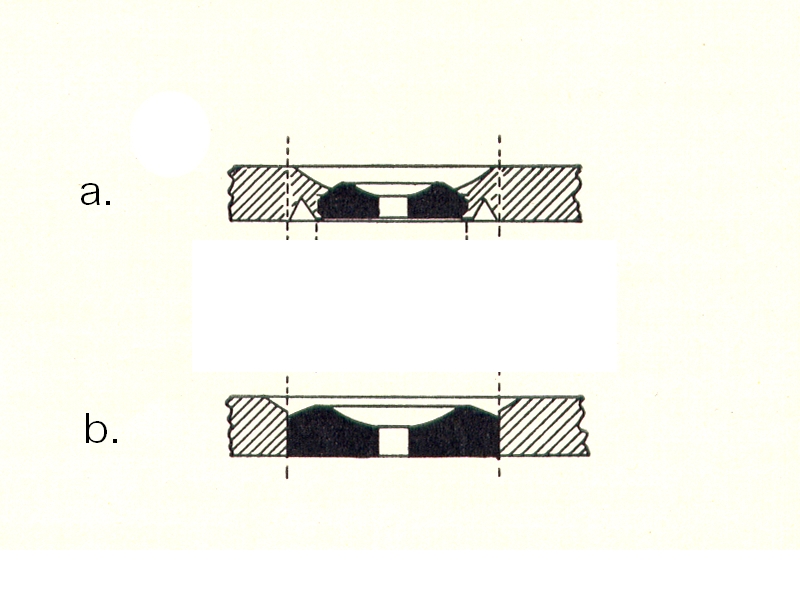
|
|
|
|
|
There were many tools devised for preparing seat for jewels. There were
specially profiled drill bits, capable of shaping the hole
predrilled in plate or bridge, similar to the set shown on the image to
the right and the one below.
|
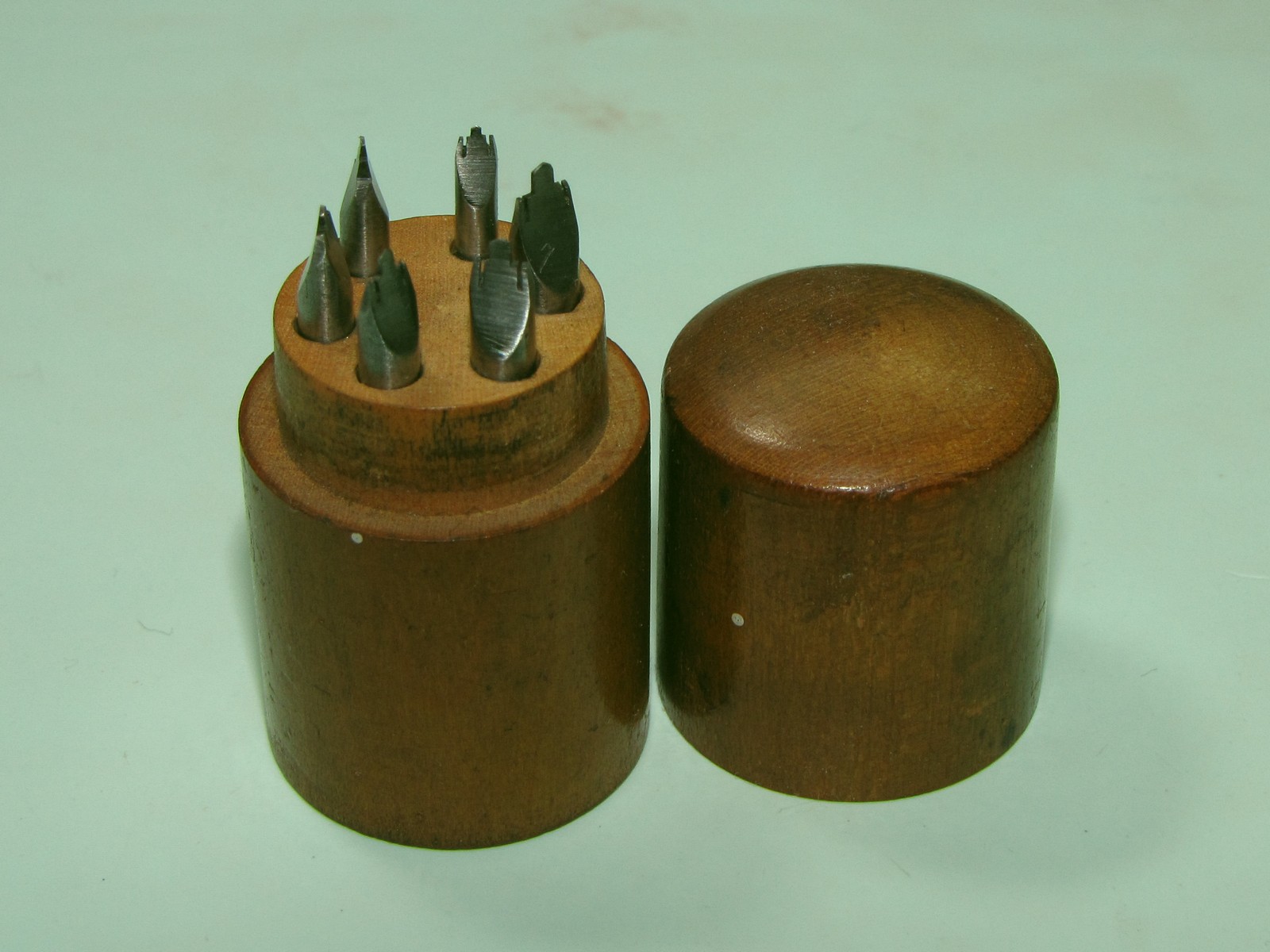
|
|
|
|
|
This image shows one of the drill bits close up.
|
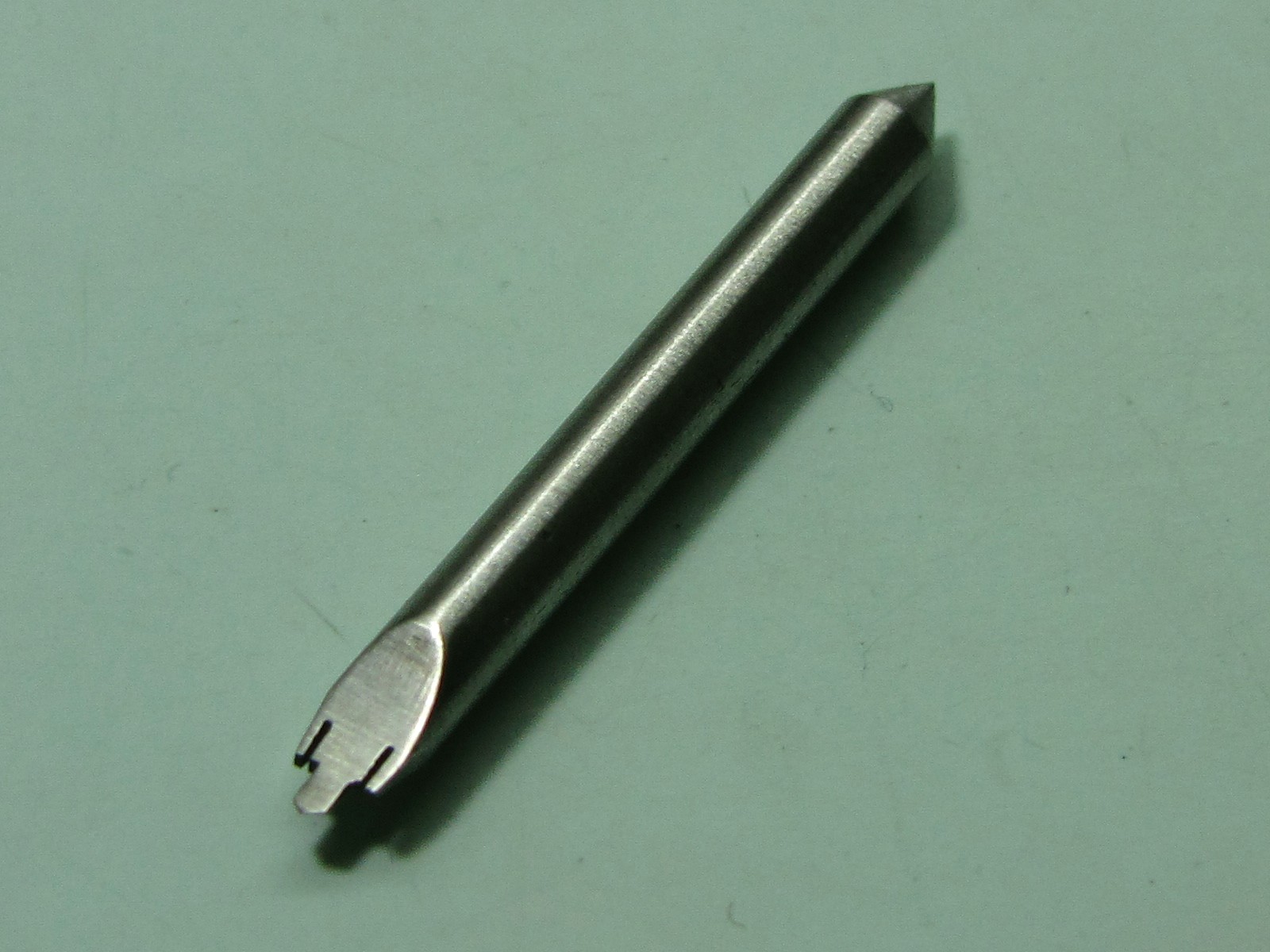
|
|
|
|
The tool shown on this image was designed as adjustable and can shape
holes for any jewel diameter within its working range. Of course
the tool was used when making watches or new parts for them.
This type of tool was used with a bow as the motive power. |
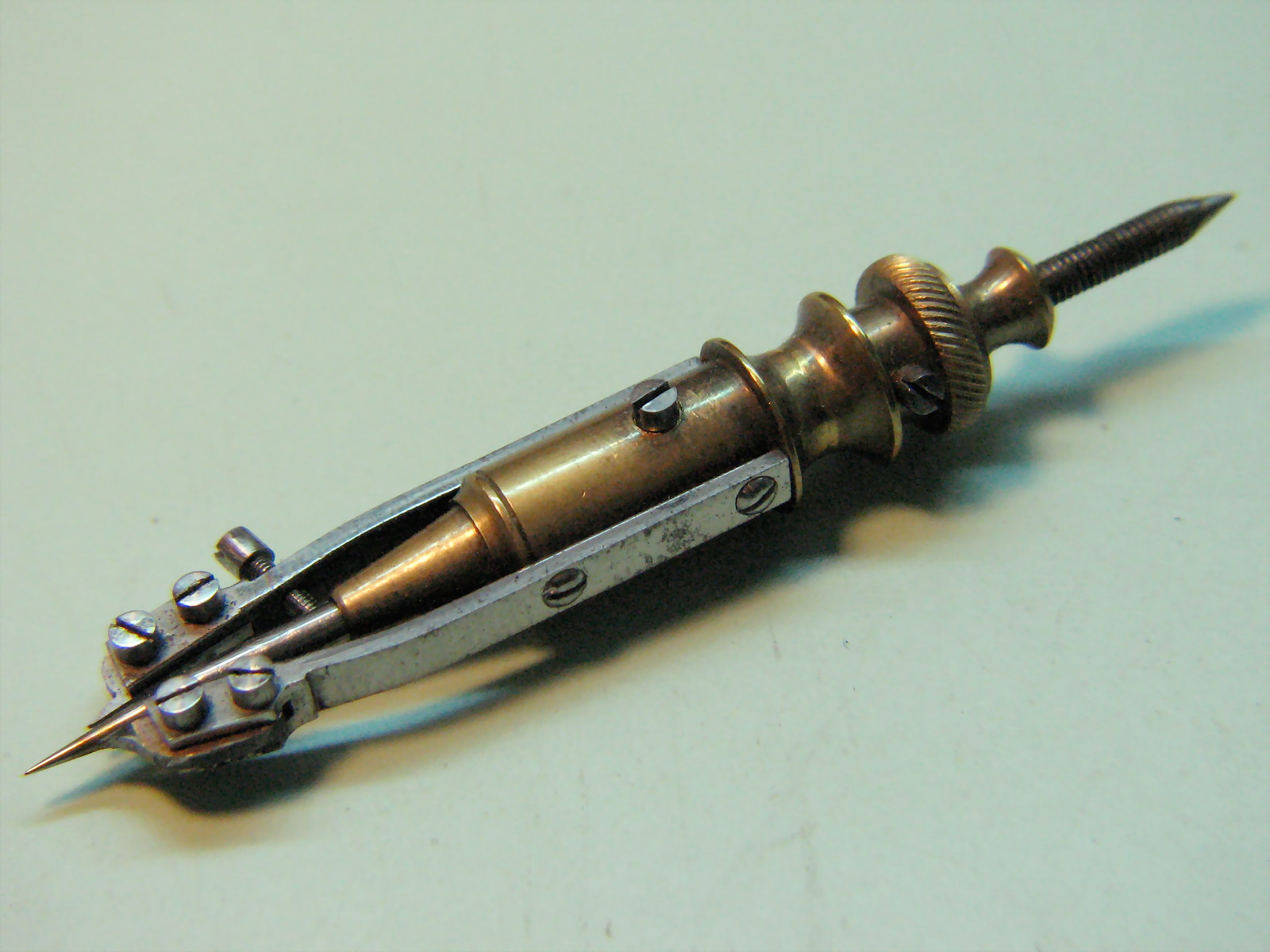
|
| |
|
| Here is a close up
of the tip of the tool. |
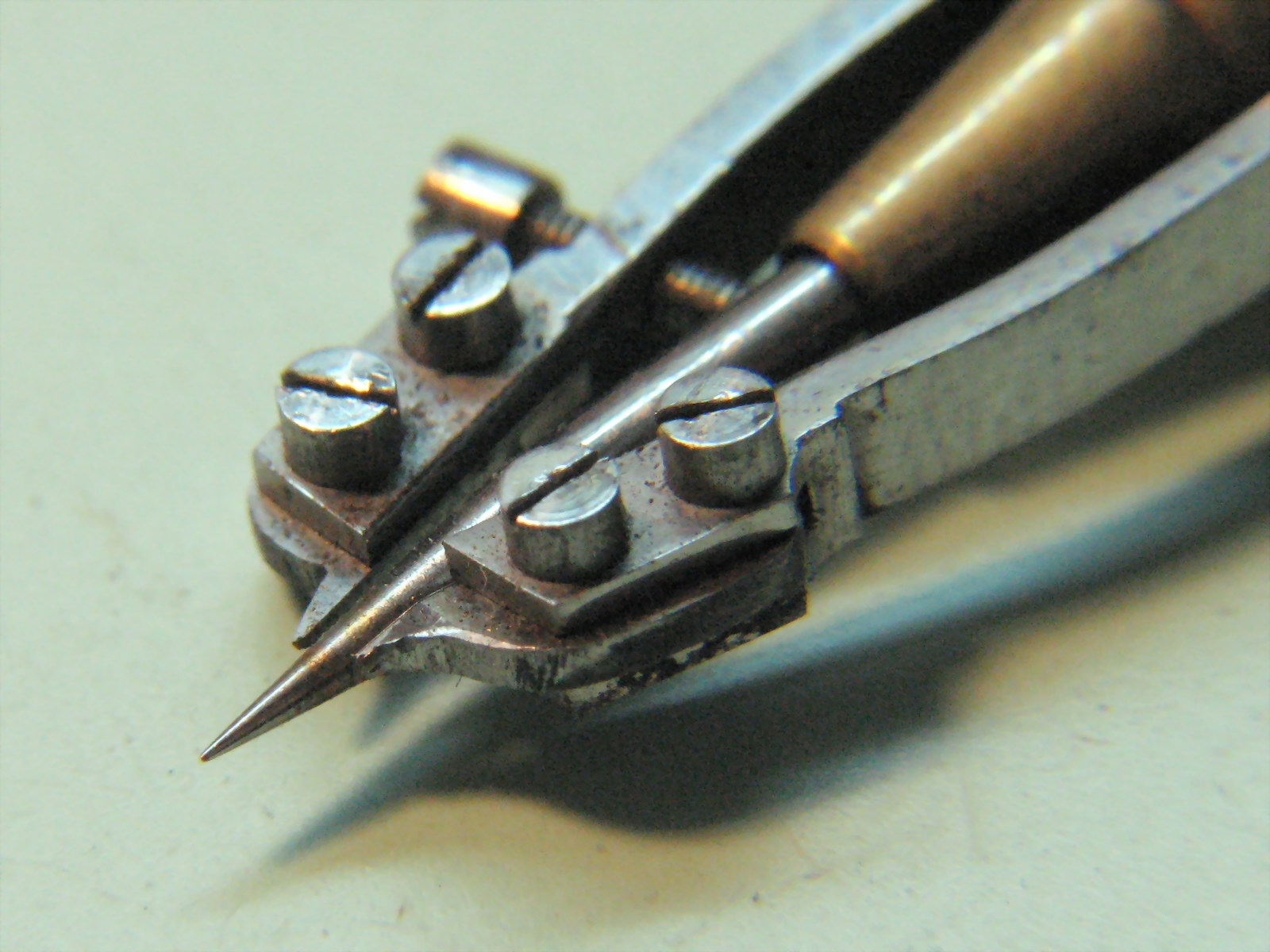 |
| |
|
To
replace damaged jewel one needs to remove the old damaged one from the
setting without damaging it.
This job is usually done in a staking set using specialised stake with
attachments designed for this purpose.
|
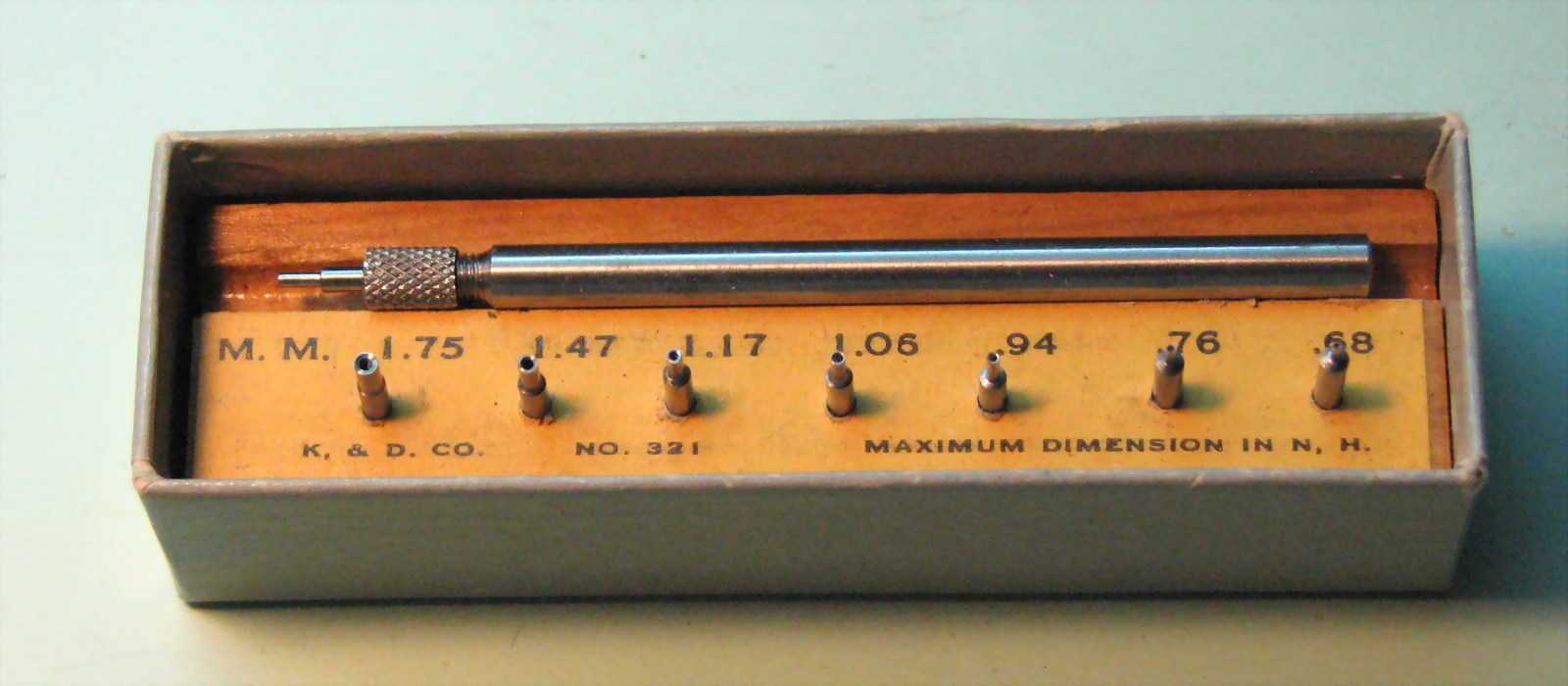 |
| |
|
When
replacing jewels set in plate or bridge of a watch then different
tooling must be used.
To the right is shown boxed set of specialised tools, used to open
jewel setting rim. |
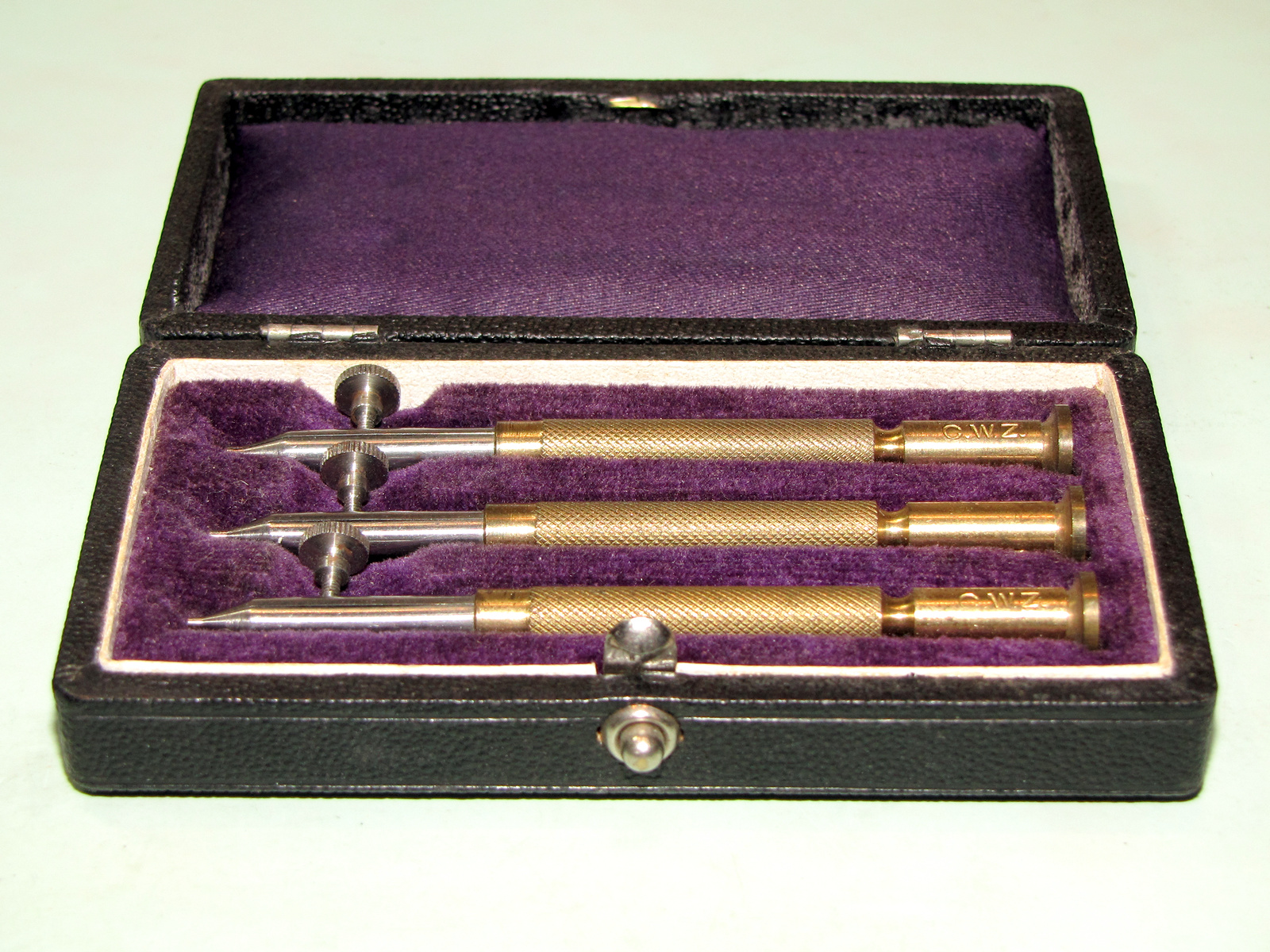 |
|
|
| To the
right is another boxed set of specialised tools, used to close jewel
setting rim. |
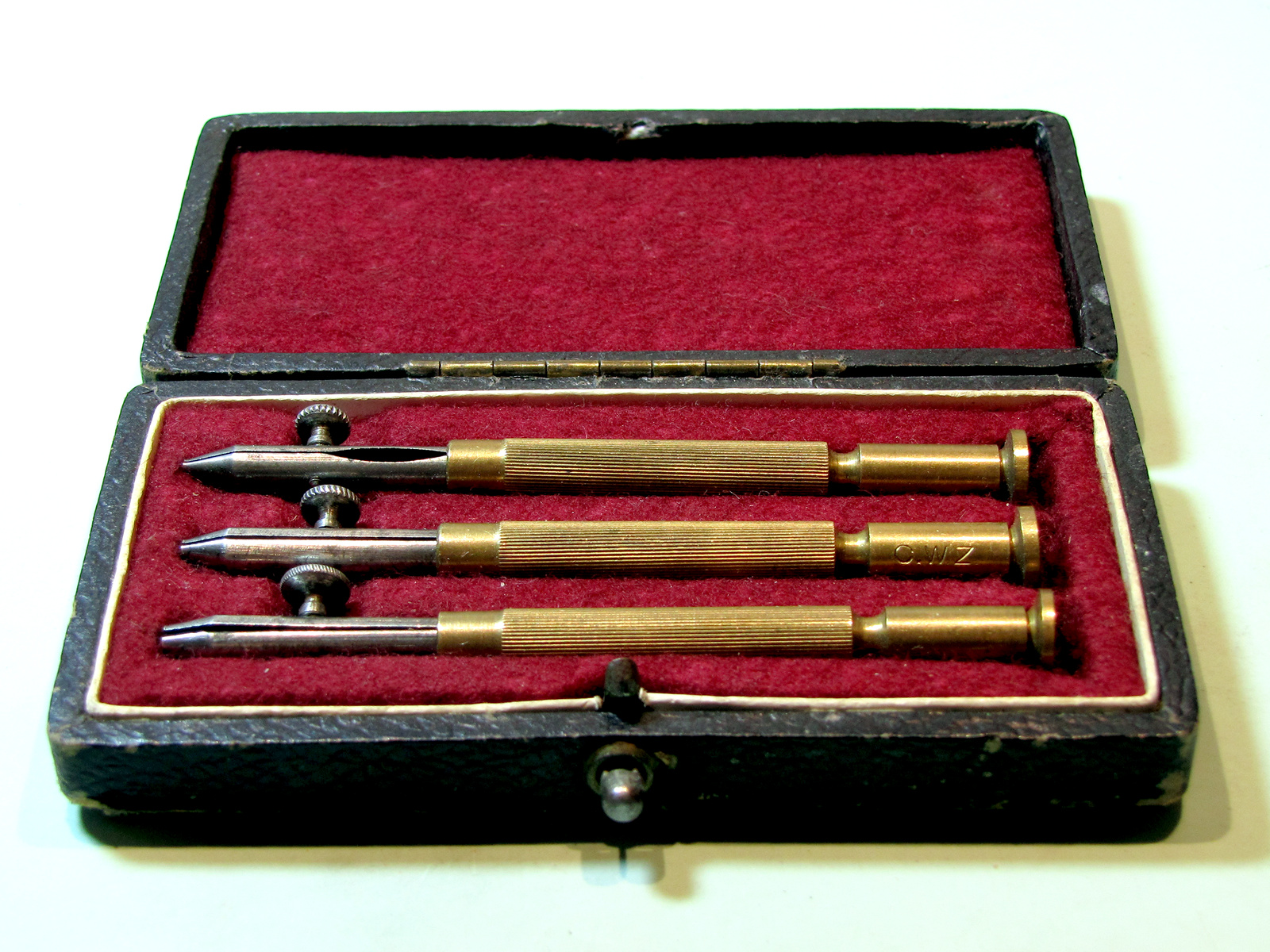 |
| |
|
After
removing damaged jewel from the setting, done carefully to open it
without damage while pushing out old jewel.
It is necessary to use one of the tools shown to the right to clean
the seat and open the setting as much as it is needed to allow
insertion of the replacement jewel. |
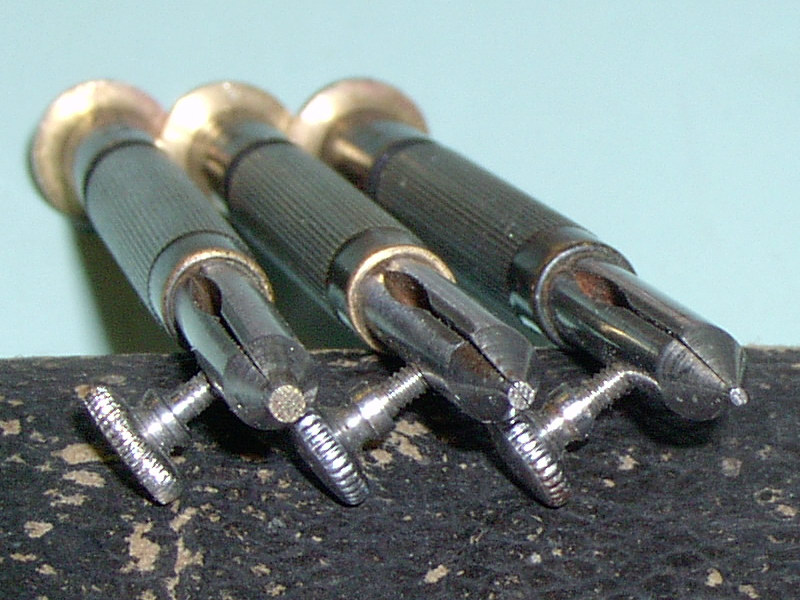 |
| |
|
With
the replacement jewel set in its place one then needs to close the
setting again and thus secure jewel.
That is accomplished using one of the tools shown on the right. Slowly
burnishing the setting's rim, adjusting the tool opening with the
setting screw on the side of the tool, as the rim closes over the
jewel edge.
|
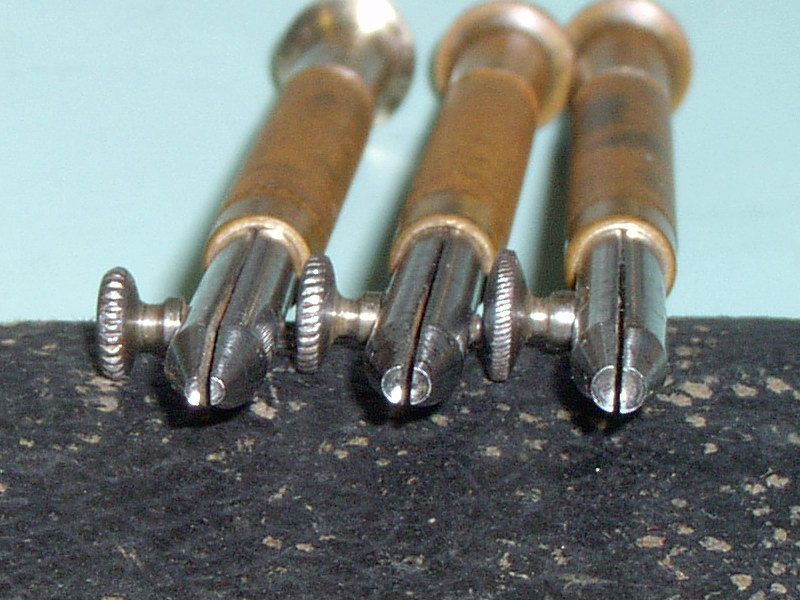 |
| |
|
To
make a new jewel setting one uses watchmaker's lathe.
Most of the work is done while setting is being held in the chuck
without removal from it. One thus achieves greatest accuracy and
concentricity of the work.
|
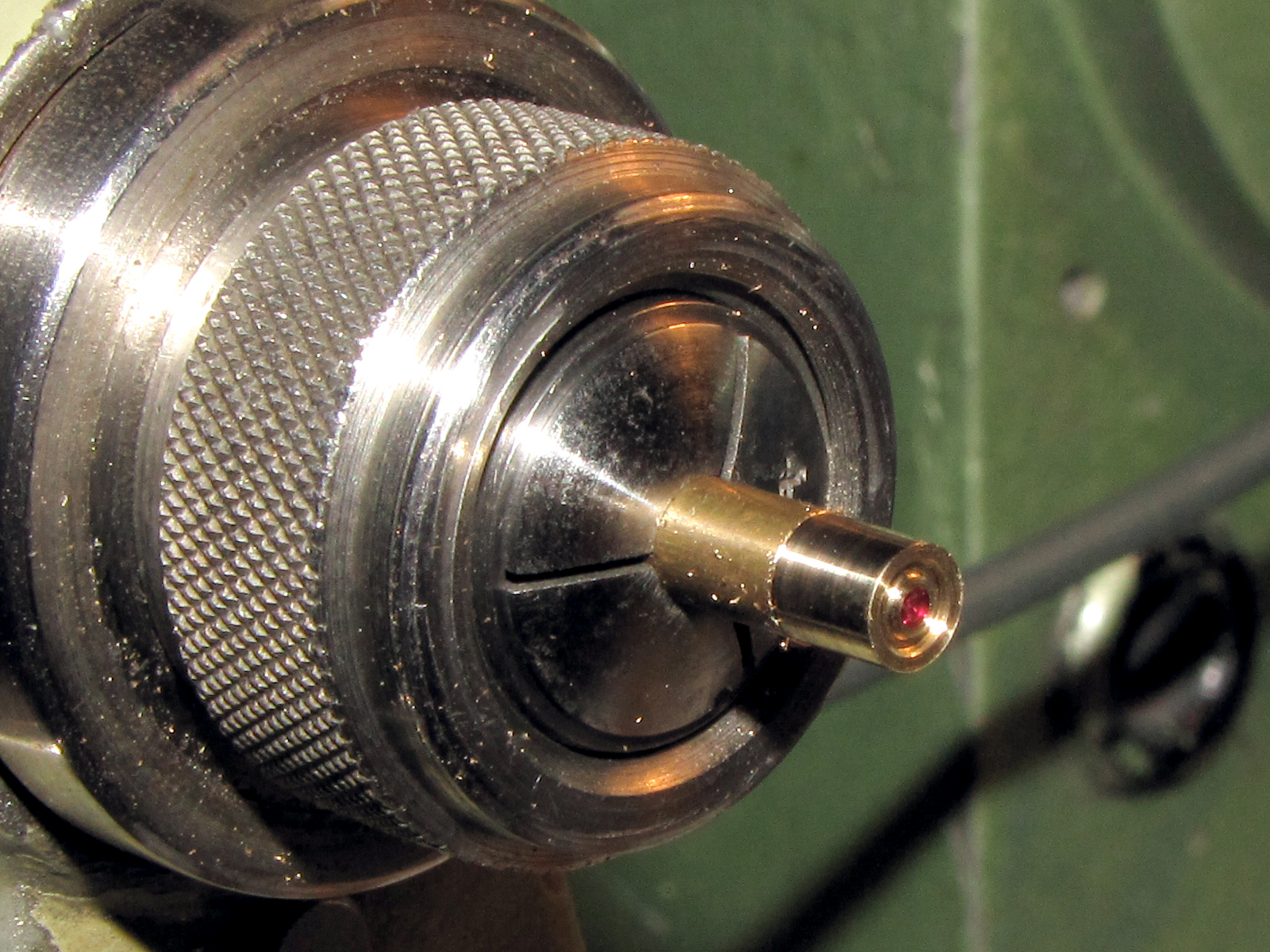 |
| |
|
To
close the setting and secure the jewel in it, it is burnished
using any of the various small burnishers.
Here are several burnishers made by myself.
Suitably sized one is held in the collet type screwdriver (or pin
vice) and the ball shaped end is applied to the metal surface which is
then slowly moved over the edge of jewel much like it is done in lathe
spinning. |
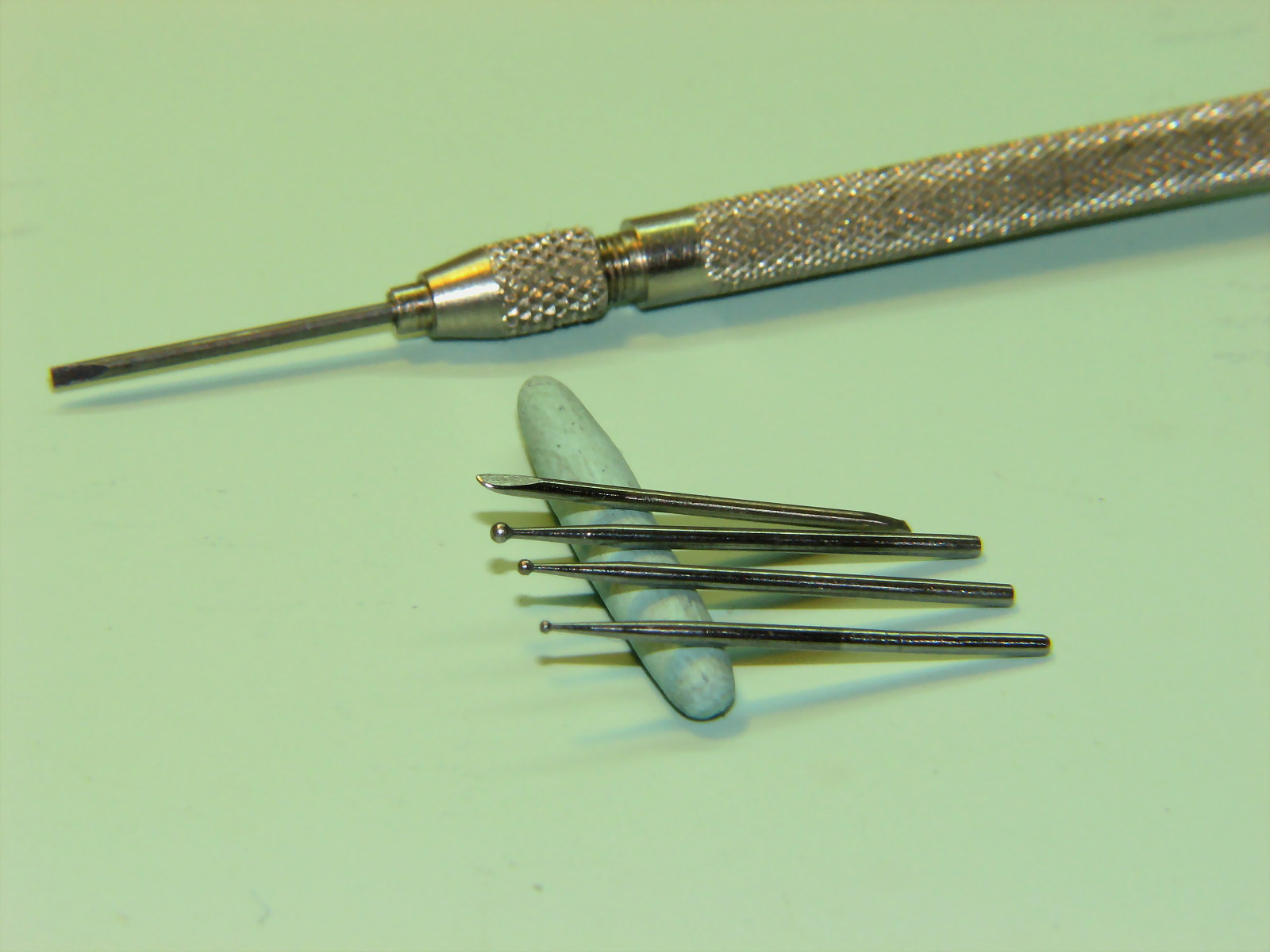 |
| |
|
In the
final stage the setting is cut off and removed from the collet. To
finish the work and adjust the height of the setting, it must be
placed back into the collet.
For this purpose there are few types of specialised collets like the
set of sub collets shown to the right.
|
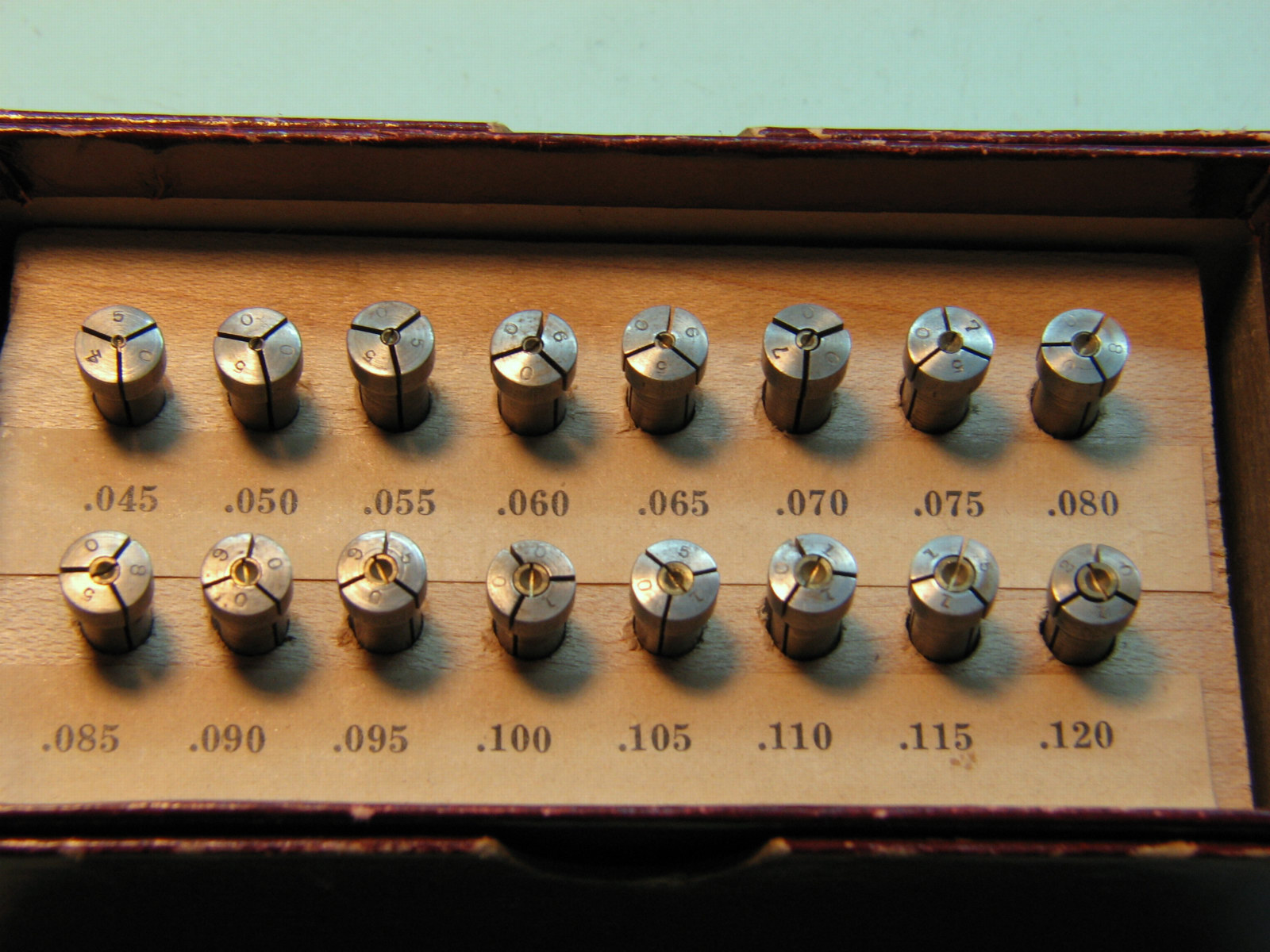 |
| |
|
| Another,
smaller boxed set of jewelling sub chucks, this one containing eight
chucks. |
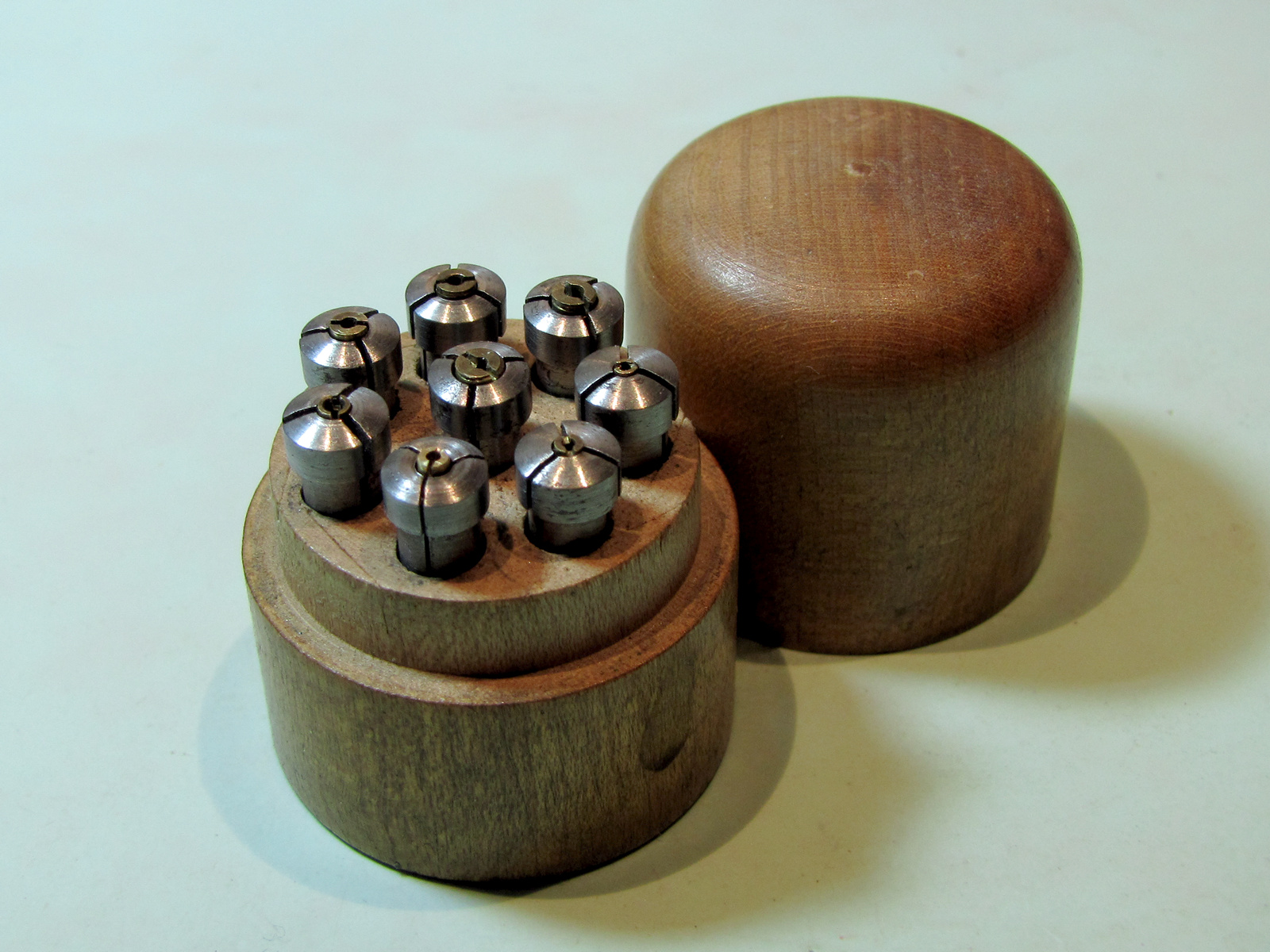 |
| |
|
| Image
to the right shows construction of the sub chucks. |
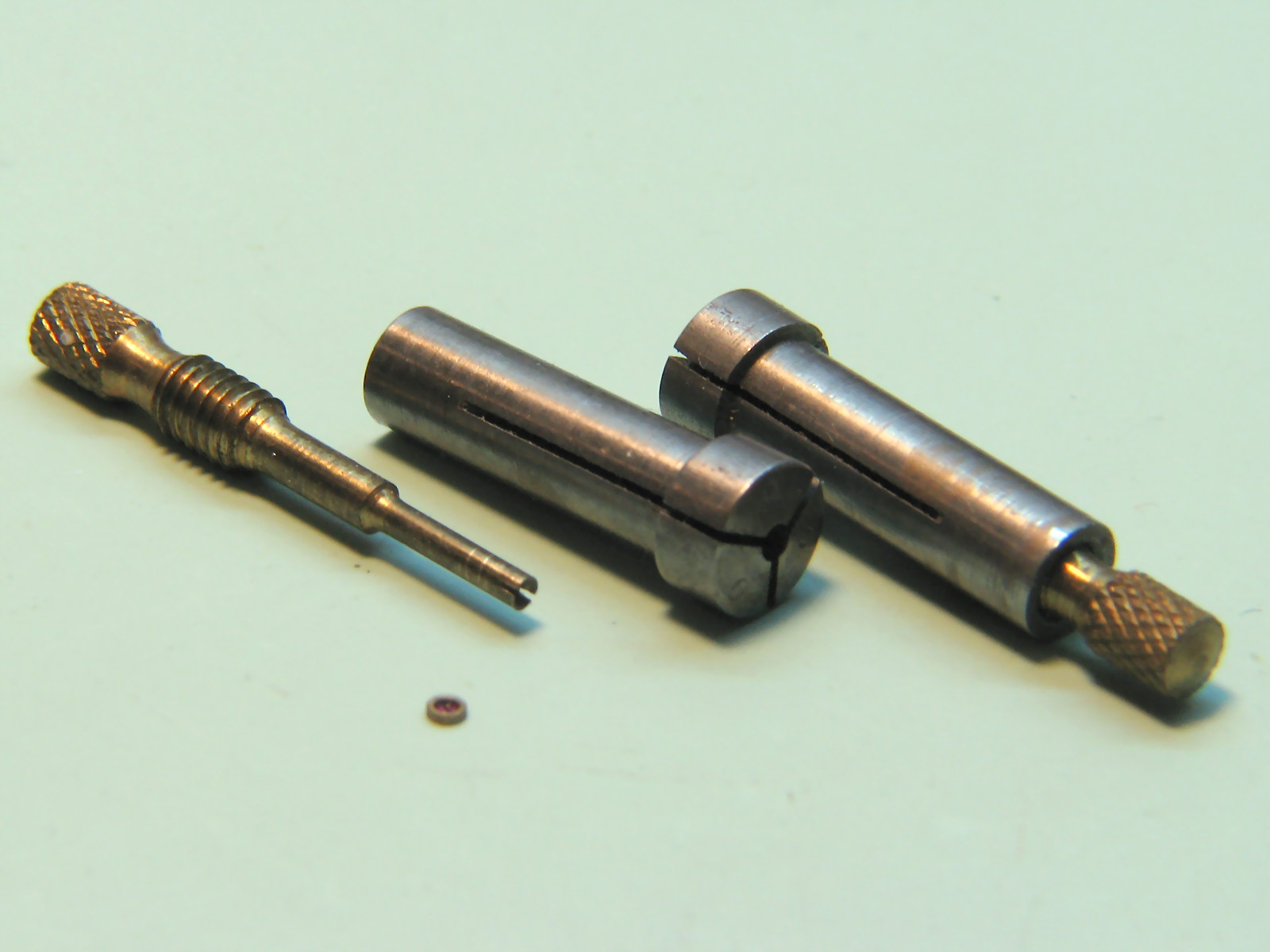 |
| |
|
| The
close up of the jaws of the sub chuck holding the almost finished
setting, ready for a final touch with the graver needed to reduce its
height. |
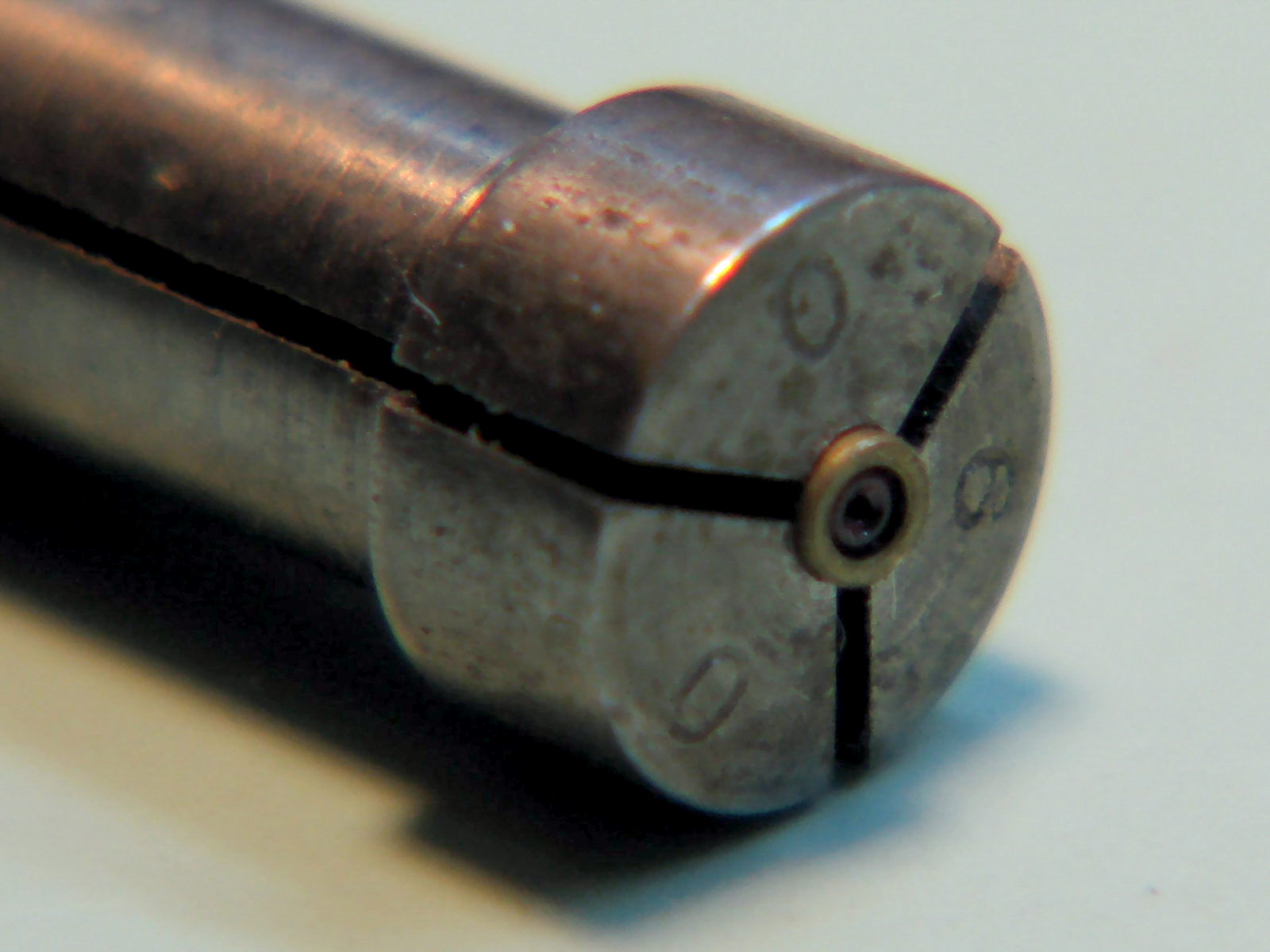 |
|
|
| For
the friction jewelling there are few tool sets available. I use the Seitz jewelling
tool with both pushers and anvils 4.0 mm in diameter.
I also use an older Seitz Jewelling Press which has pushers 4.0 mm
in diameter and anvils 3.0 mm in diameter.
|
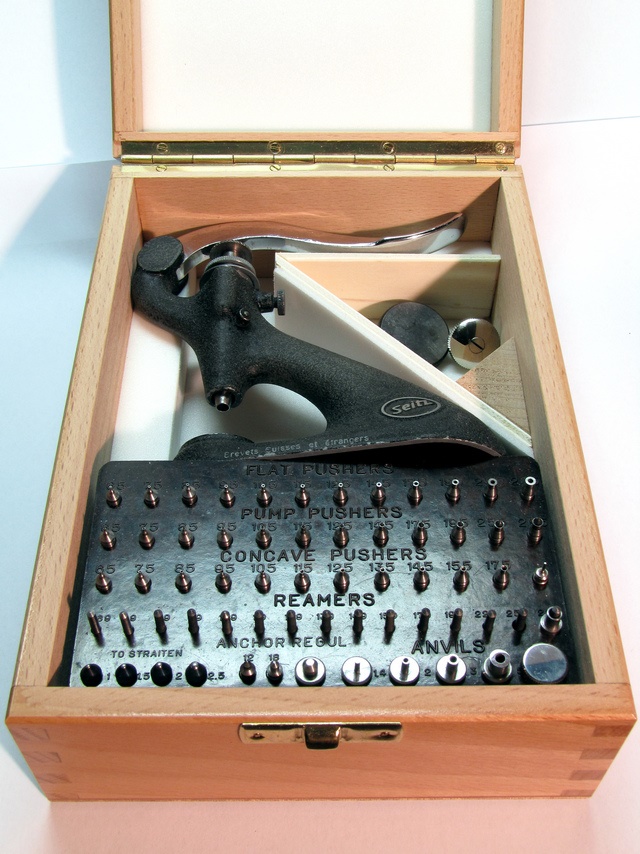 |
| |
|
|
The main tool is the small hand operated press which is equipped with
a reamer holding arbour, a press plunger for holding any of several
dozen of attachments which are supplied with the tool. |
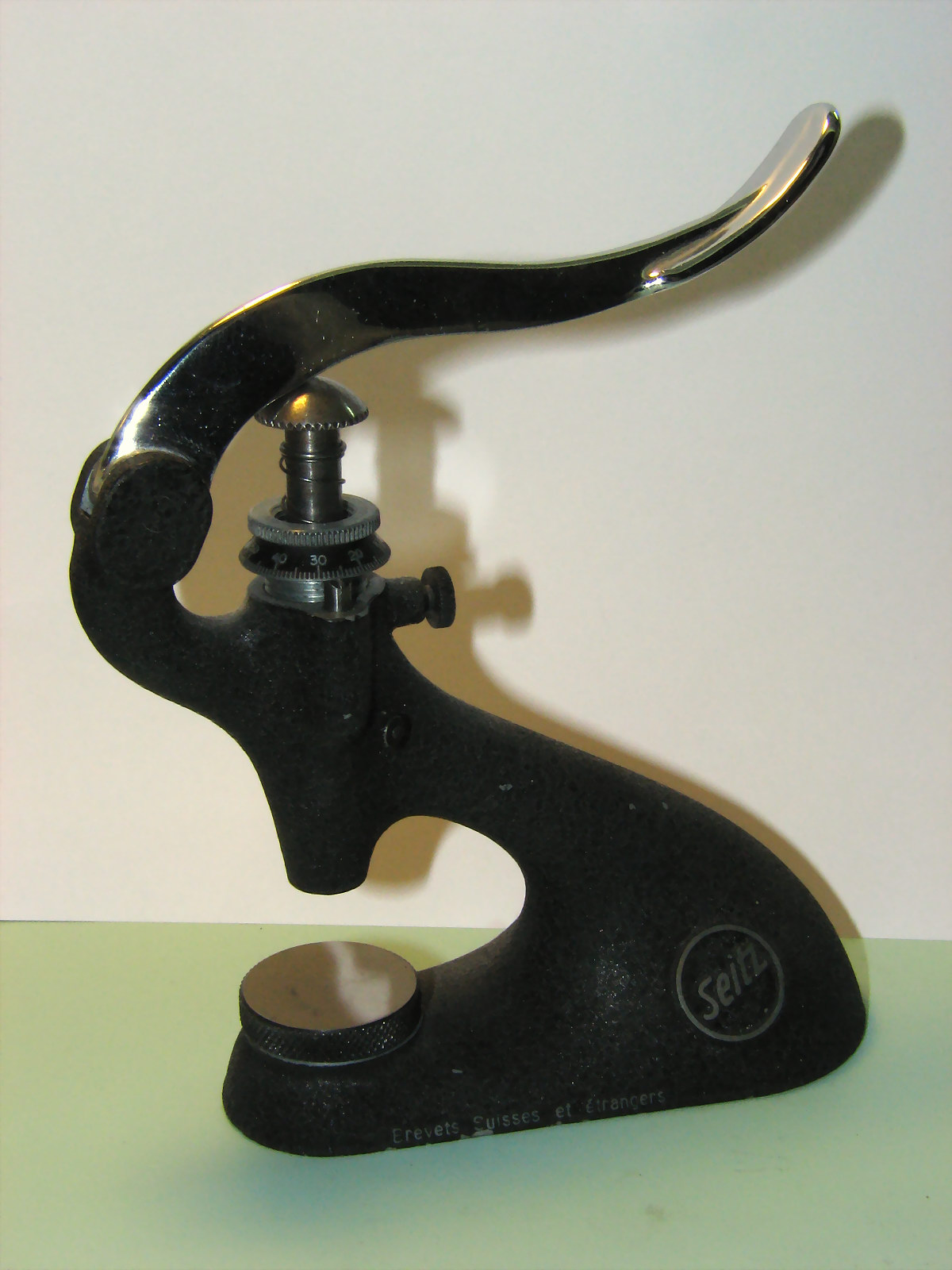 |
|
|
| The
pedestal holds a large number of the accessories, containing mainly
various pushers, and reamers used for opening holes to the exact size
needed for fitting of friction jewels. Also there are several anvils
used to provide safe support for watch mainplate and/or bridges. |
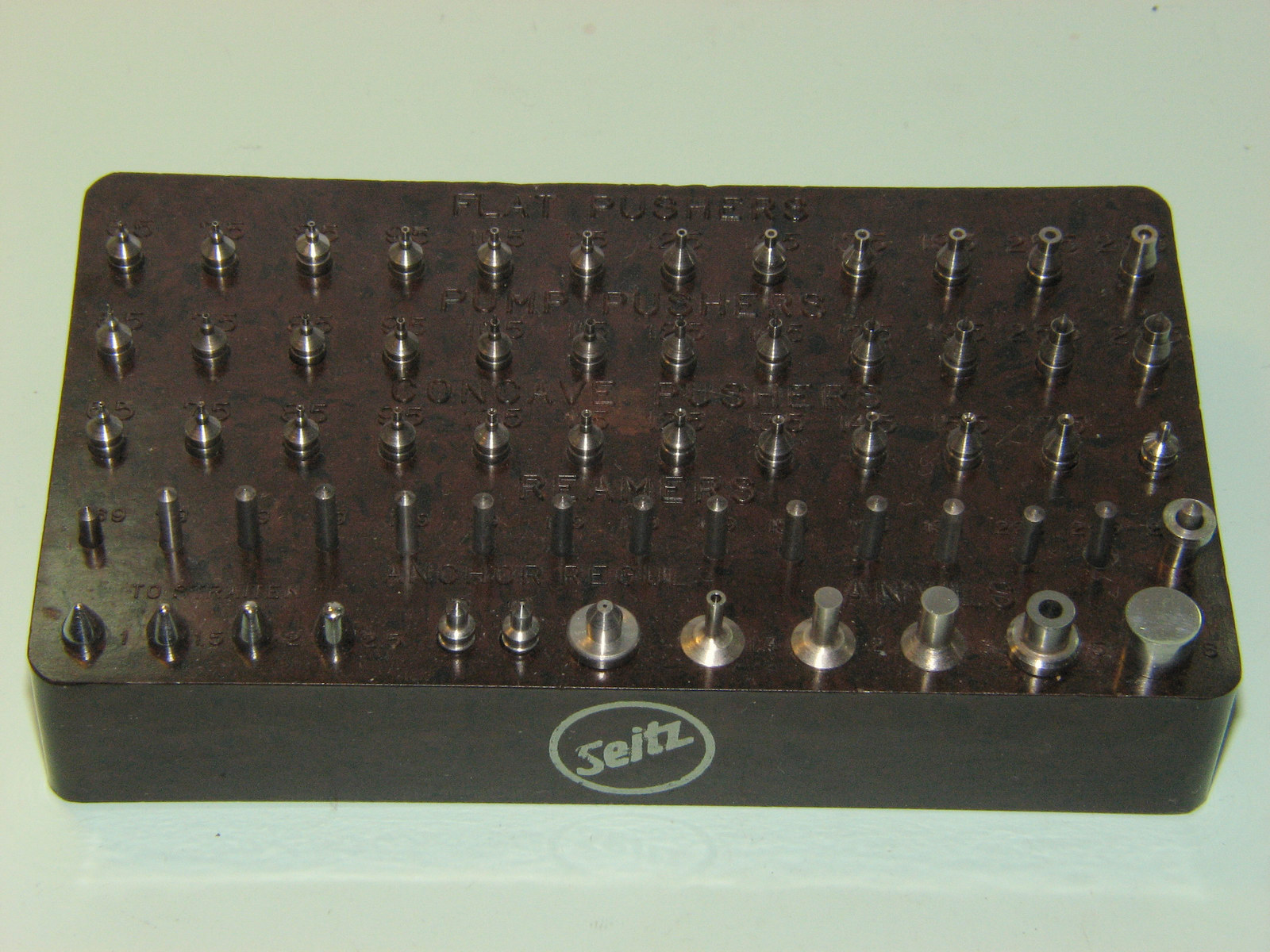 |
| |
|
| The
advantage of the press accepting anvils 4.0 mm in diameter, is in its
ability to use any one of the pushers as an anvil.
The press has a screw in adaptor in its base which enables use of
pushers as an anvil. |
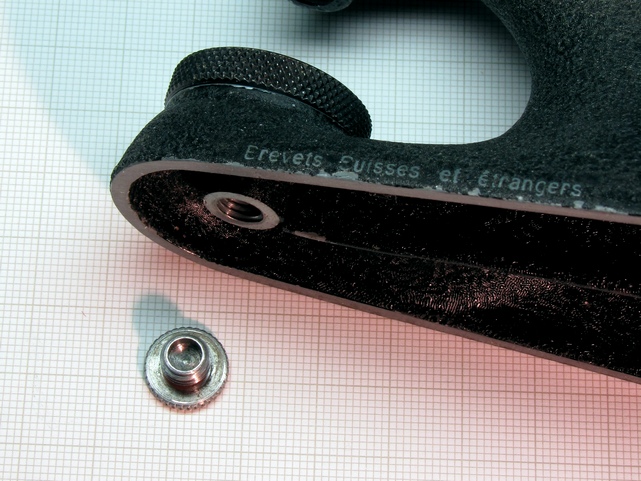 |
| |
|
| This
is arbour for holding cutting reamers, whose shanks are tapered in
order to provide accurate and sure mounting for reaming holes to size. |
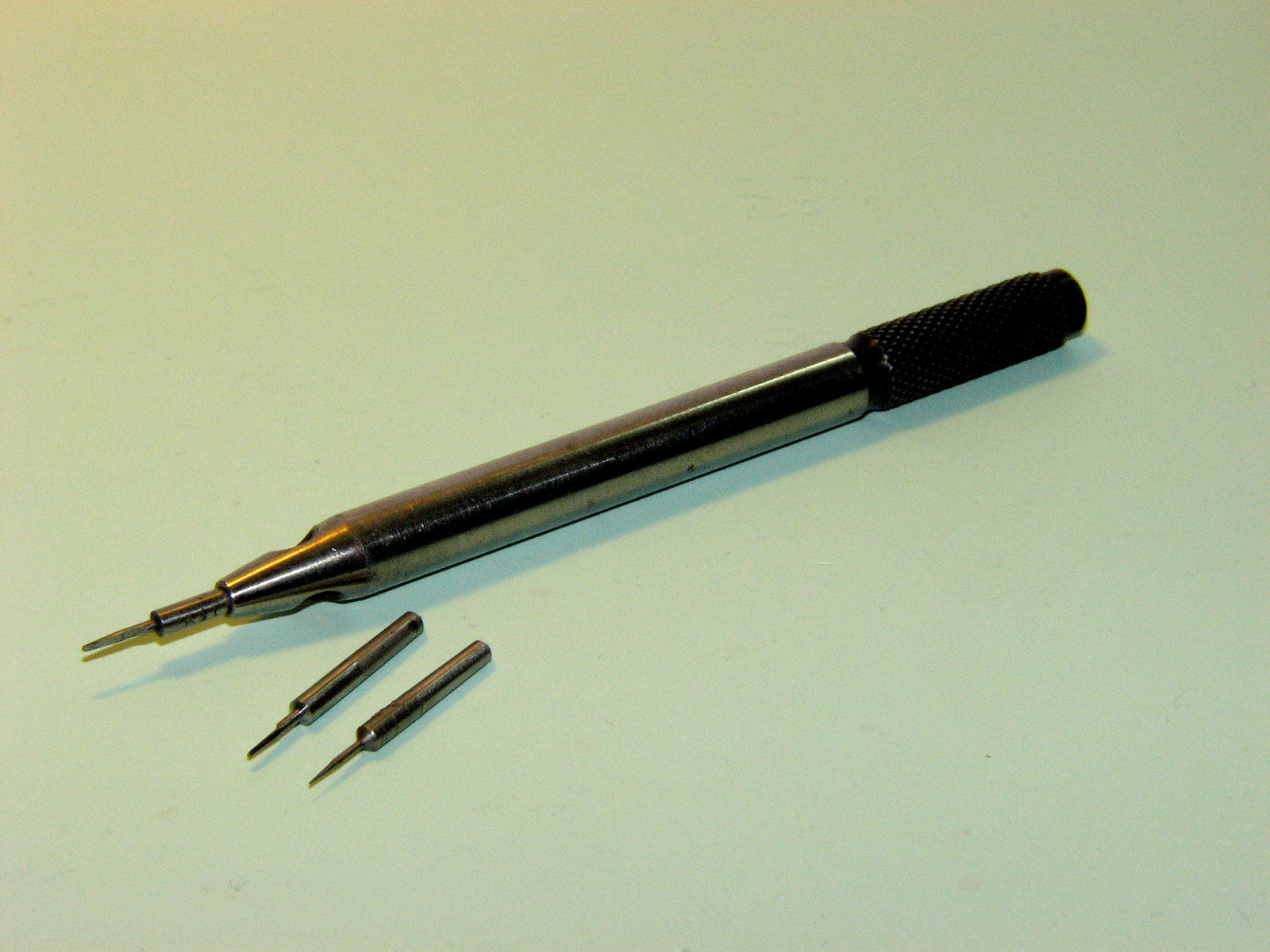 |
| |
|
| A
close up of the arbour nose and couple of reamers. |
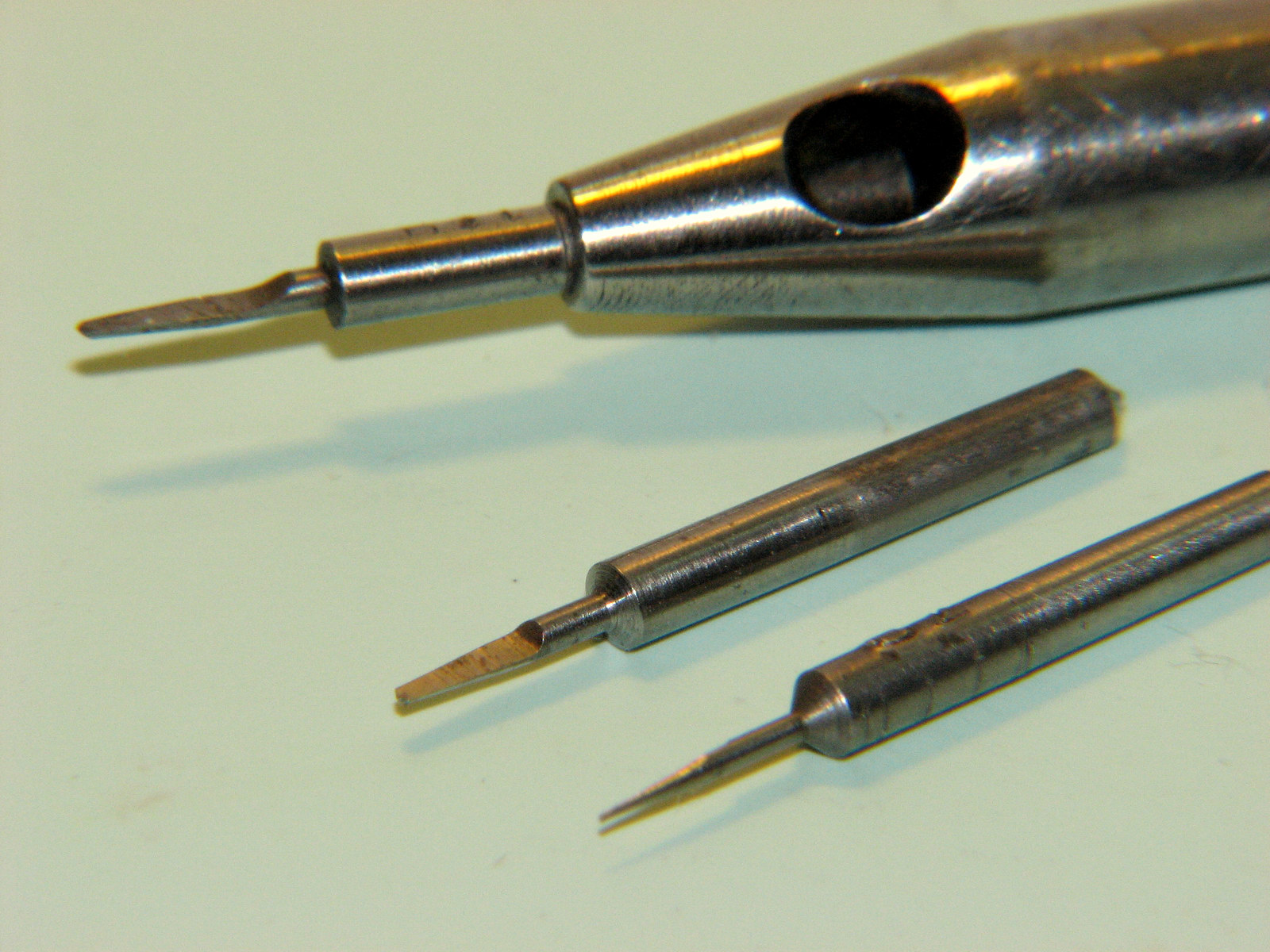 |
| |
|
| This
is press, with handle removed to allow reaming. |
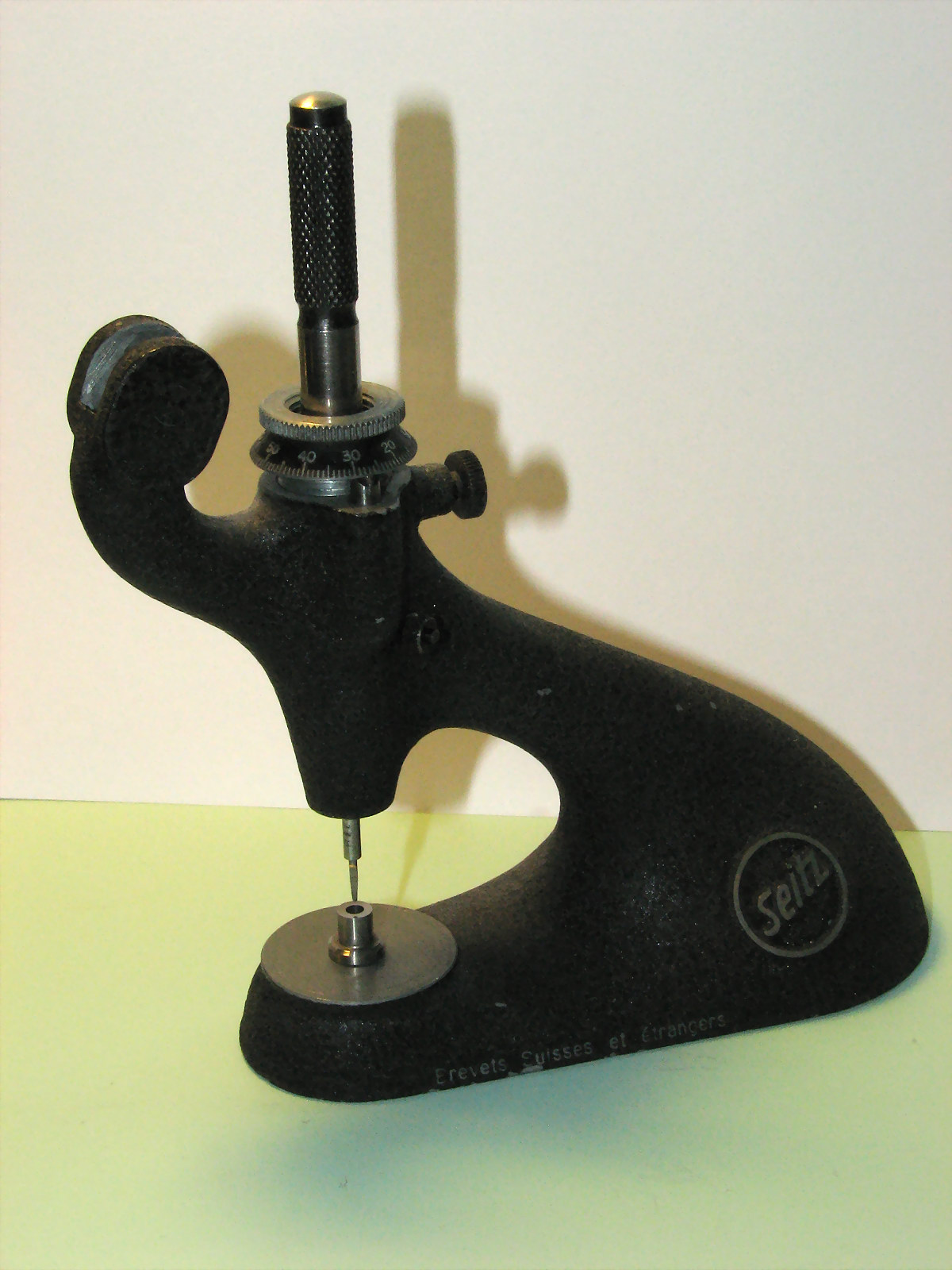 |
| |
|
| This
is special accessory used to hold very small parts such as bridges
when either reaming or friction fitting jewels. |
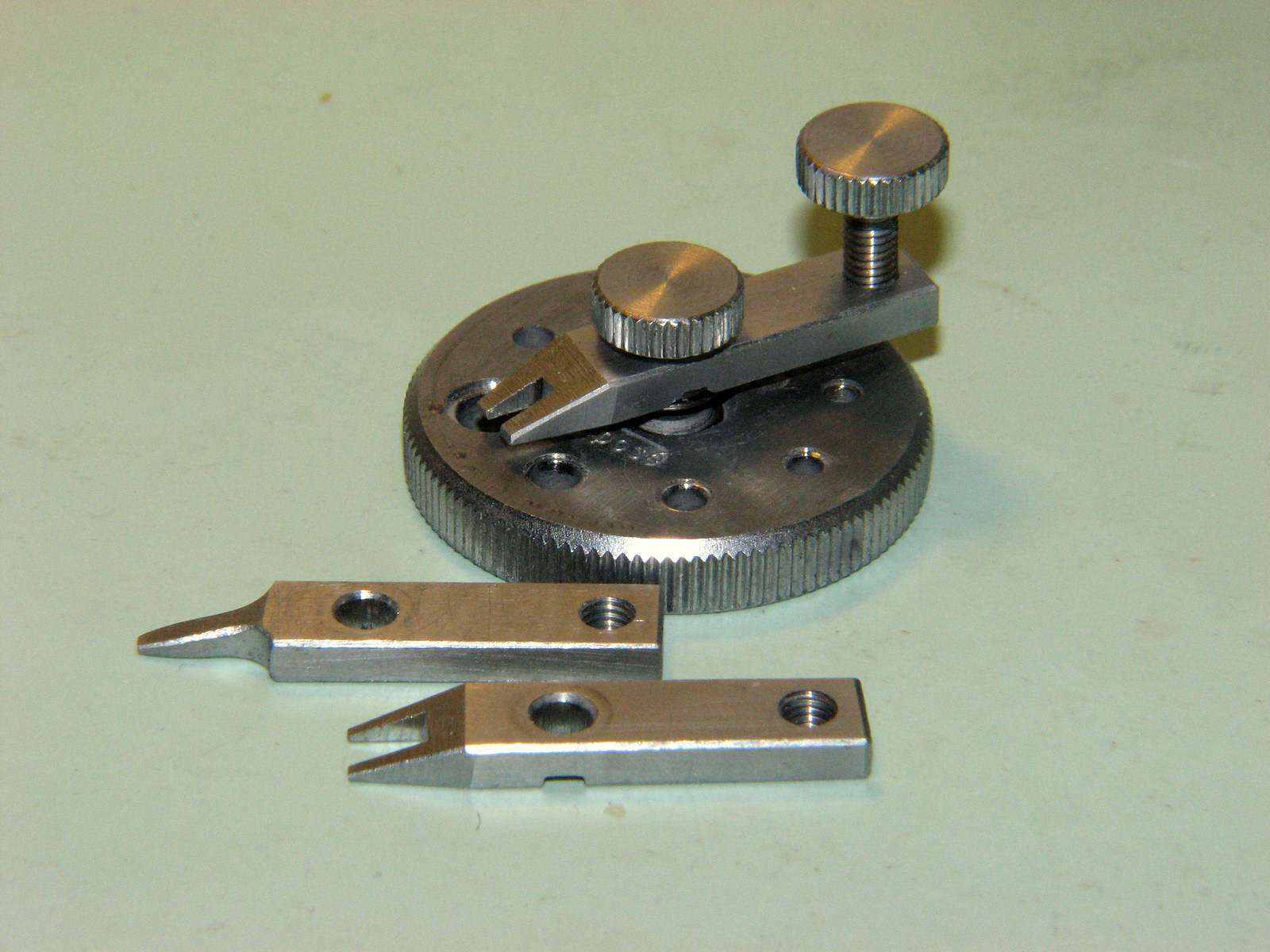 |
| |
|
| The
same accessory shown holding a rather small pallet bridge of a lady's
wrist watch. |
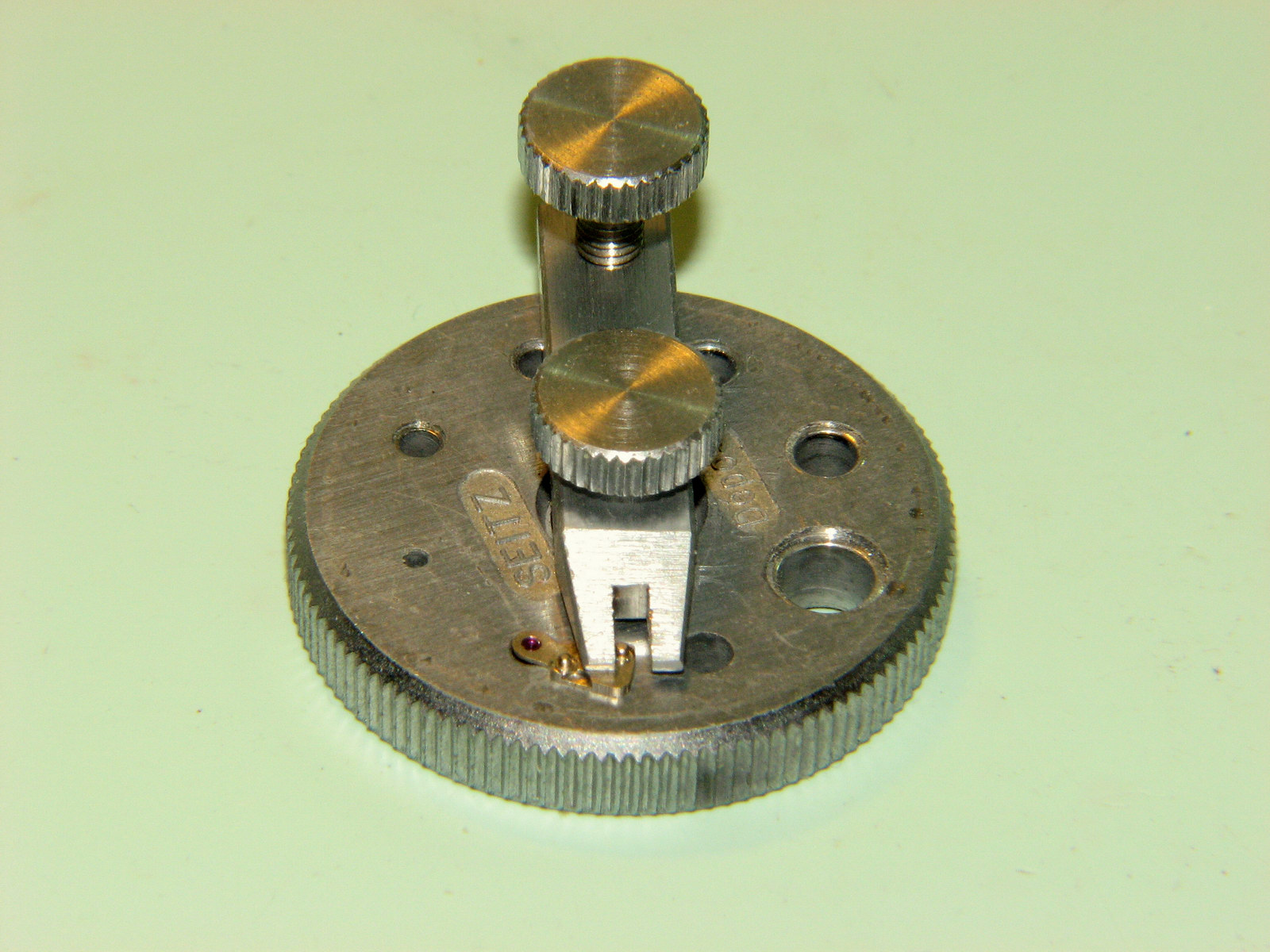 |
| |
|
| Here
are some brass pushers used for mounting watch hands. |
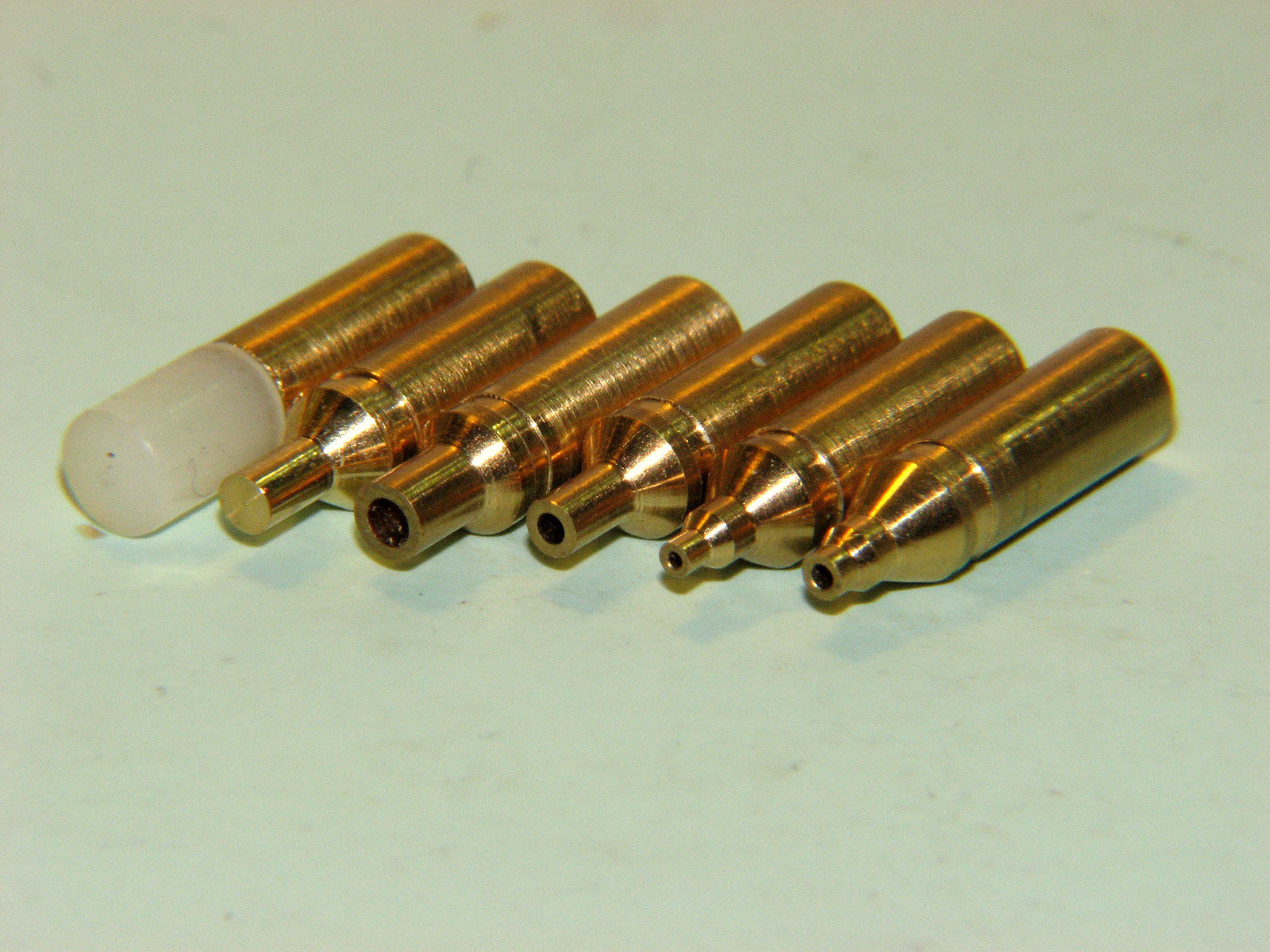 |
| |
|
| Here
is a set of specialised pushers and anvils intended for fitting
Incabloc shock resistant balance wheel jewel settings. |
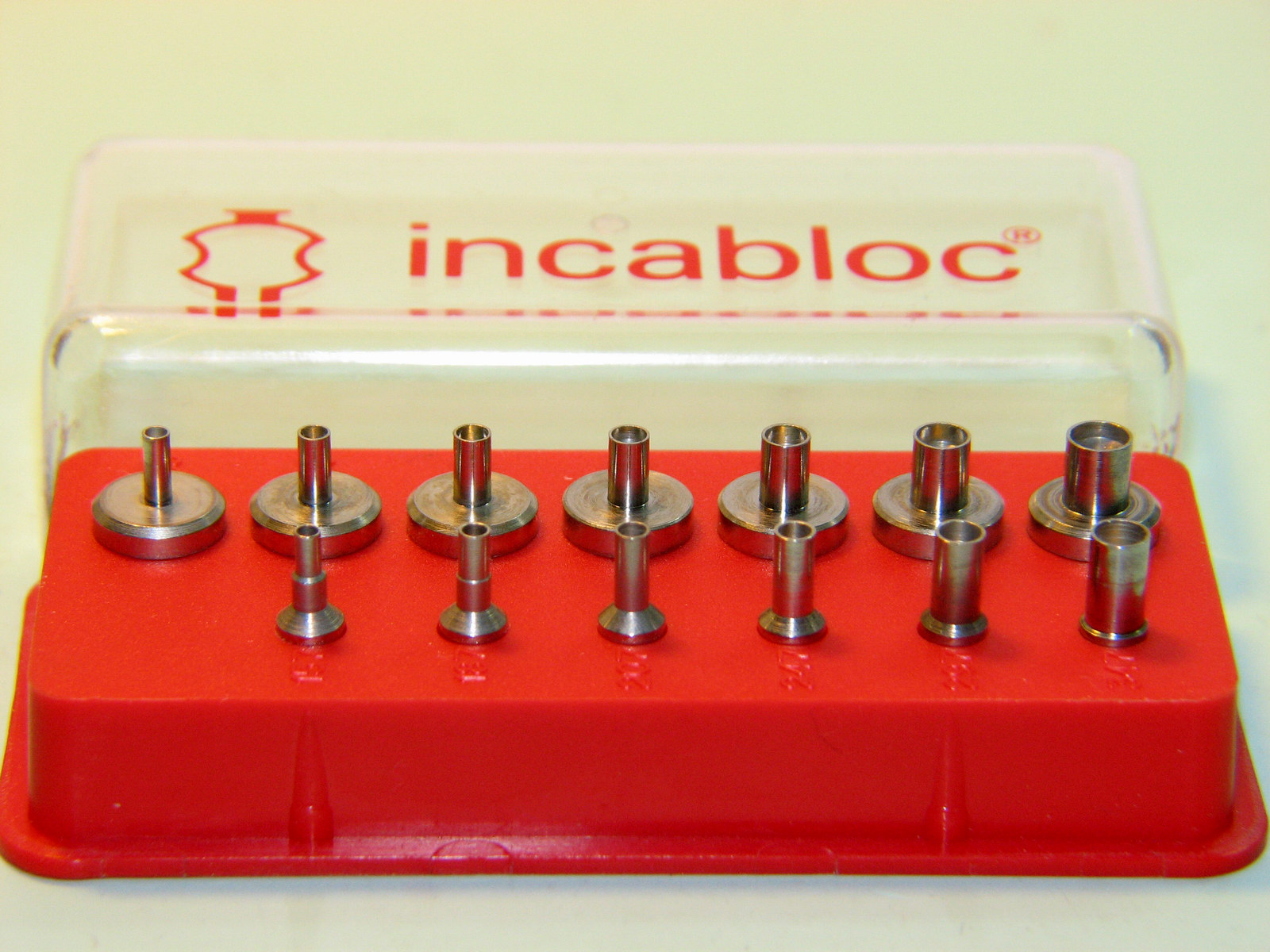 |
| |
|
Here
we have a specialised set of pusher and anvil for safe lanterning the canon pinion.
The use of the micrometric adjustment of the press does come to the
full advantage, as one cannot deform or squash canon pinion when
lanterning. |
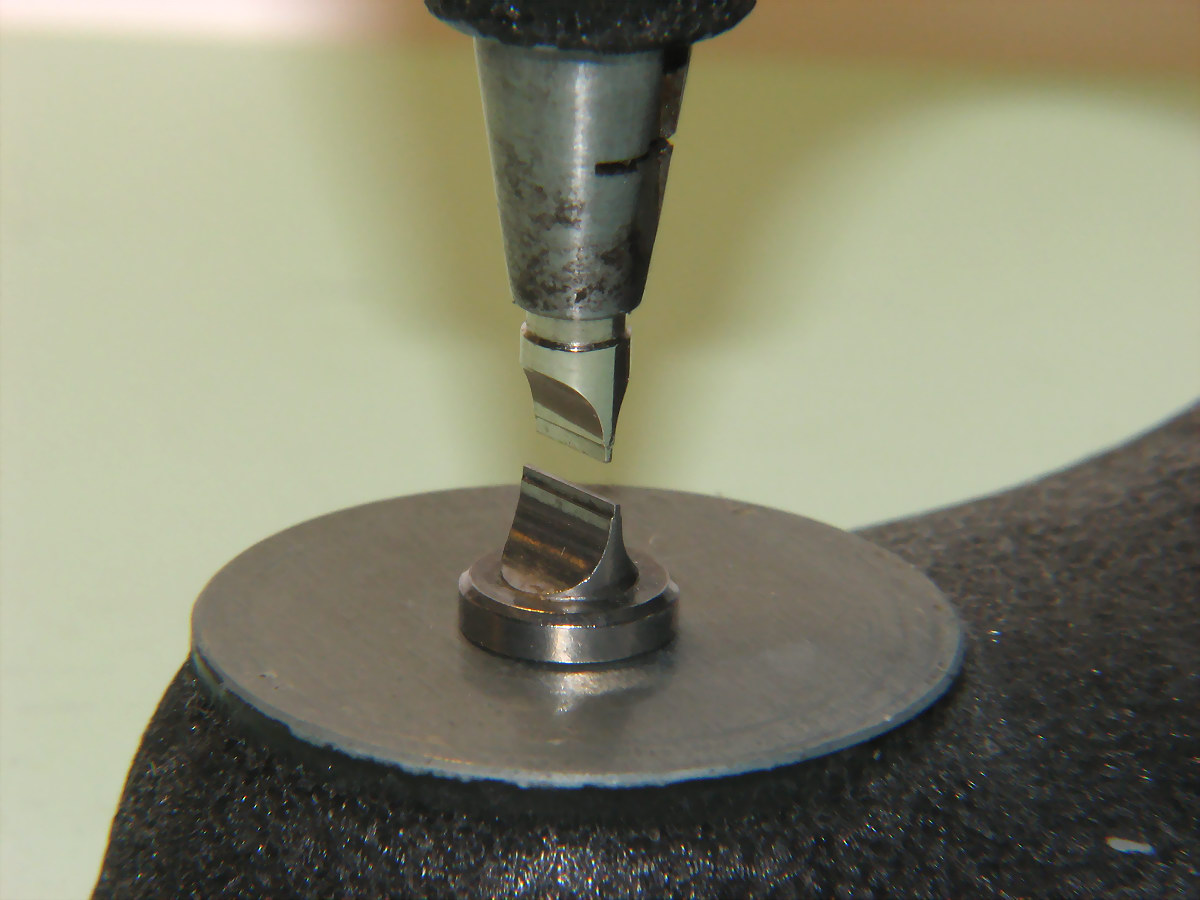 |
| |
|
We can
see here the micrometer screw which is used for setting the limit to
which the press plunger will travel.
The scale is graduated in the 1/100 mm units, thus making press quite
suitable for easy adjustment of the end shake of wheels in
watches.
|
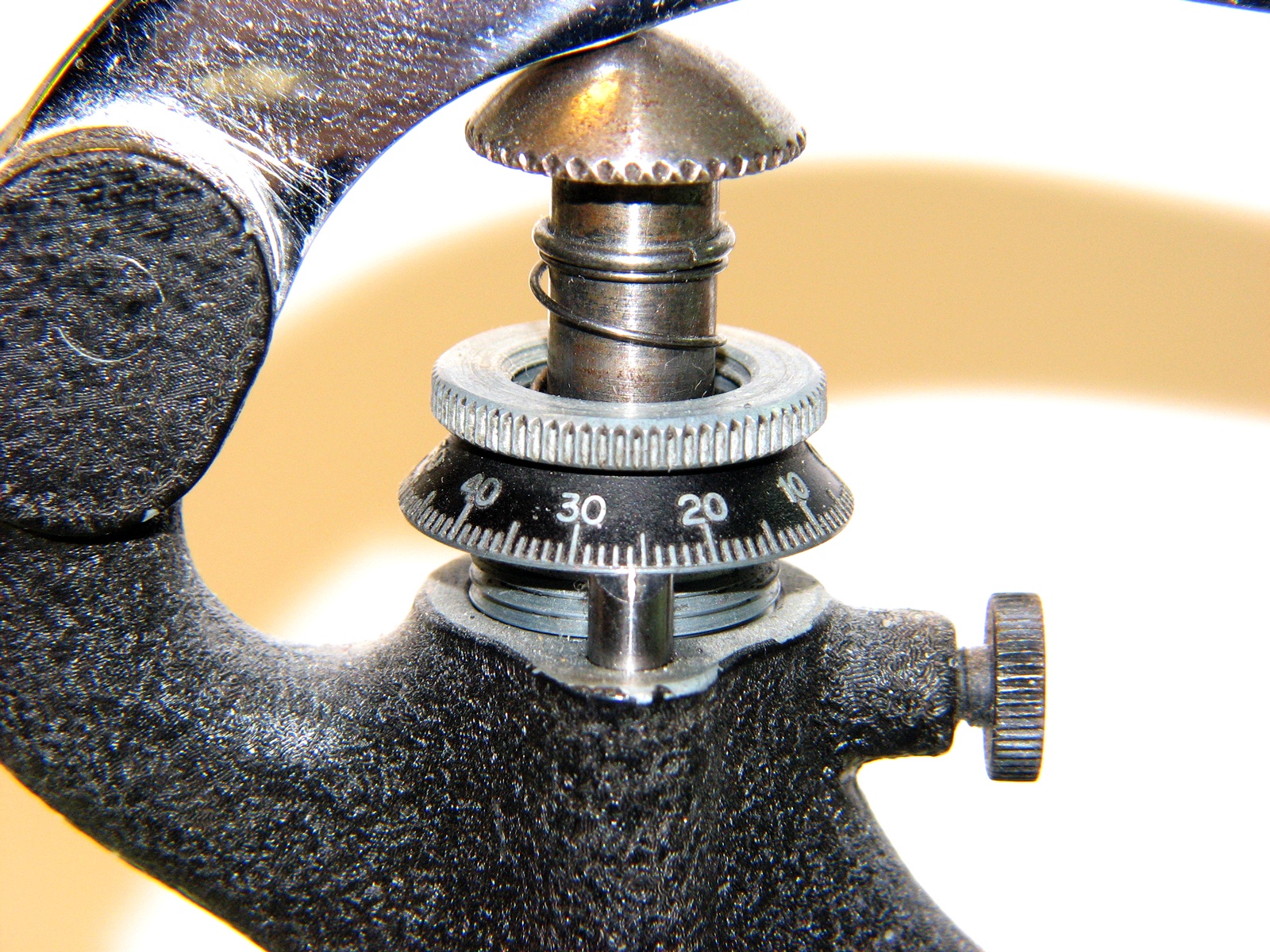 |
| |
|
For
doing the end shake adjustment the plunger top needs to be
replaced with an adapter which then fastens the arbour securely to the
micrometric screw.
|
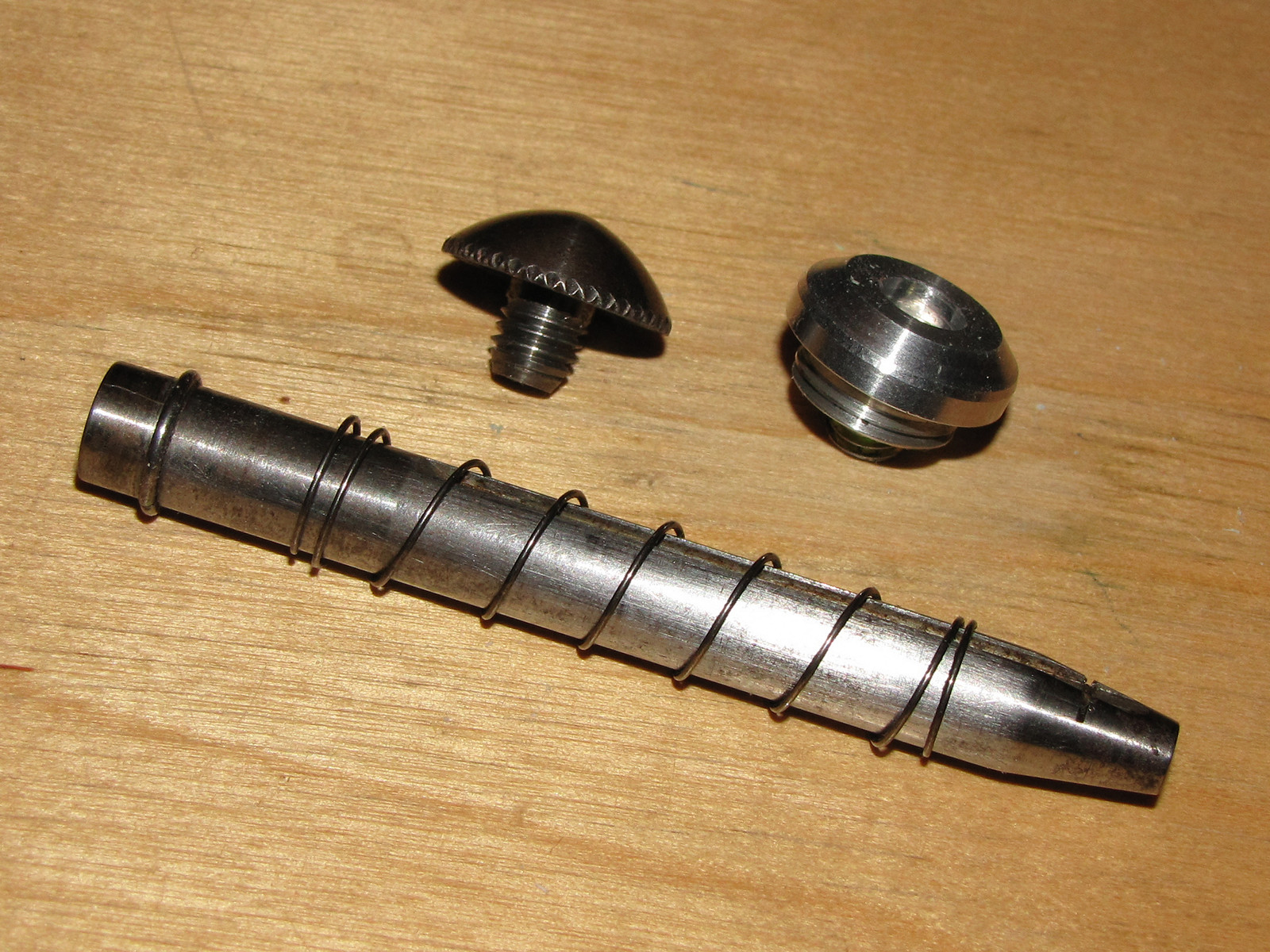 |
|
|
With
the adapter fitted onto the plunger, its motion is now governed not by
a lever, but exclusively with the micrometer screw.
Utilising micrometer screw graduated in 1/100 mm it is now possible to use press for the
easy and accurate end shake adjustment or for precise height measurements inside of the
watch movement or of its parts.
|
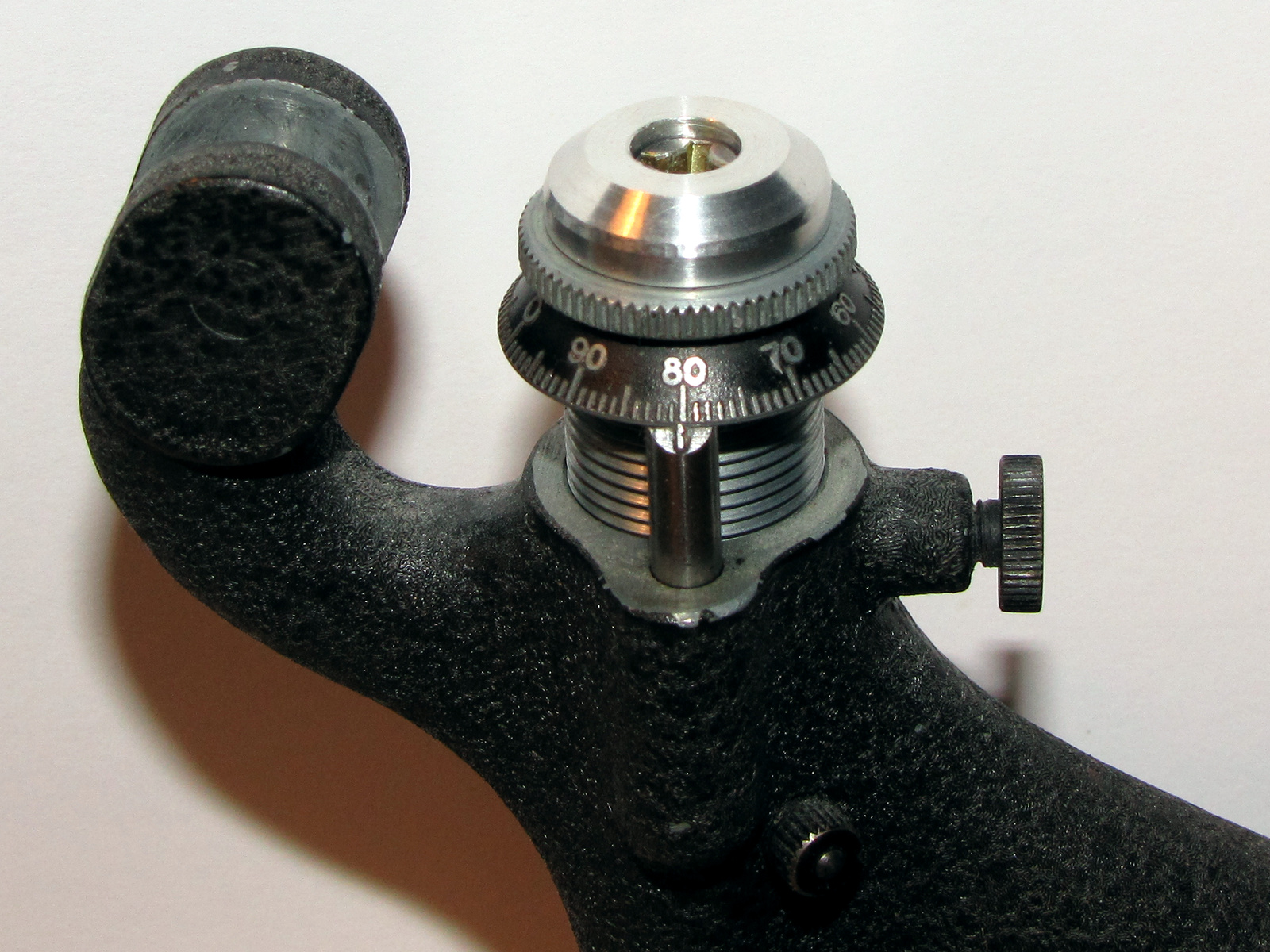 |
| |
|
| After
many years of using DIY micrometer nut, I was able to procure
original.
Second image shows its construction with the split bolt that serves
to set a zero reading at any position of the plunger, just like it was
done with the DIY micrometer nut. |
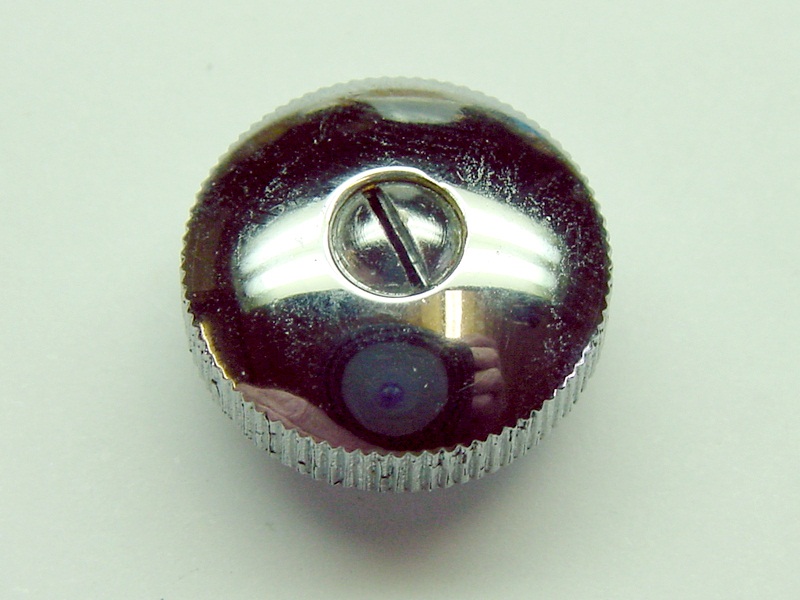 |
|
|
|
Jewel Hole Plug Gauges for checking size of jewel holes, calibrated
to very tight tolerance. The test is simple go/no go.
Allows testing the size of a jewel hole from the balance staff
through to wheel train.
Plug gauges range in size from 0.07 to 0.50 mm (0.003" to
0.020"), the step size is 0.01 mm (0.0004")
Also available in step size of 0.002 mm (0.00008")
|
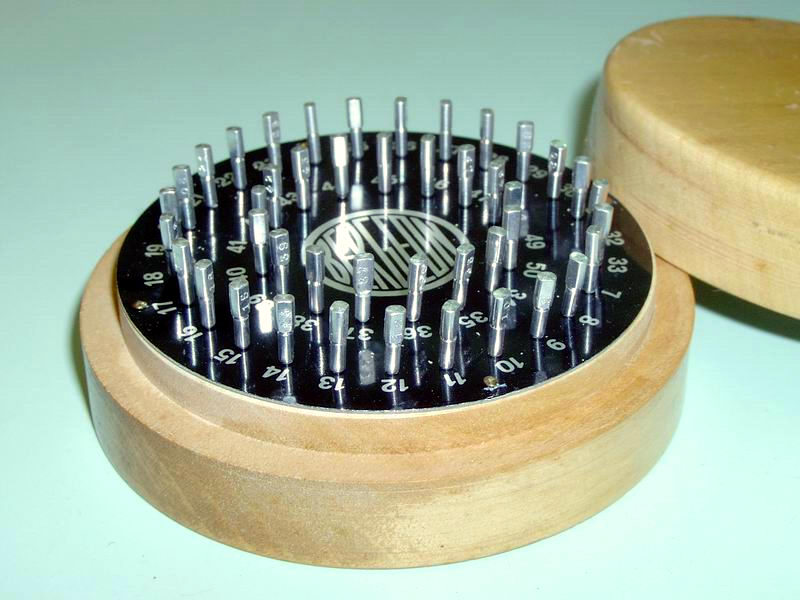 |
| |
|
|
Jewelled Pivot Gauge for checking the pivot size and
roundness, sized from balance staff pivots to wheel train pivots.
The use is simple, pivot is fit tested to the jewels
until one is reached that will accommodate it. The Jewel that fits the
pivot being the correct size, just like with conventional ring gauges.
Jewel holes are in the range from
0.07 to 0.50 mm (0.003" to 0.020"), the step size is 0.01 mm
(0.0004").
Also available in step size of 0.005 mm (0.0002")
|
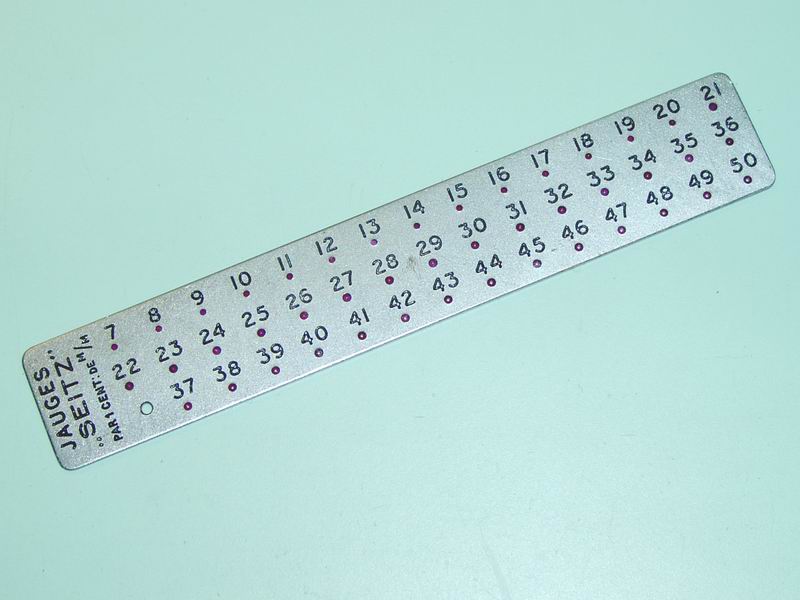 |
|
|
| Jewelled Pivot Gauge
similar to the above but with the extended range of jewel sizes,
0.07-0.20 mm in steps of 0.01 mm and 0.22-0.78 mm in steps of 2/100
mm |
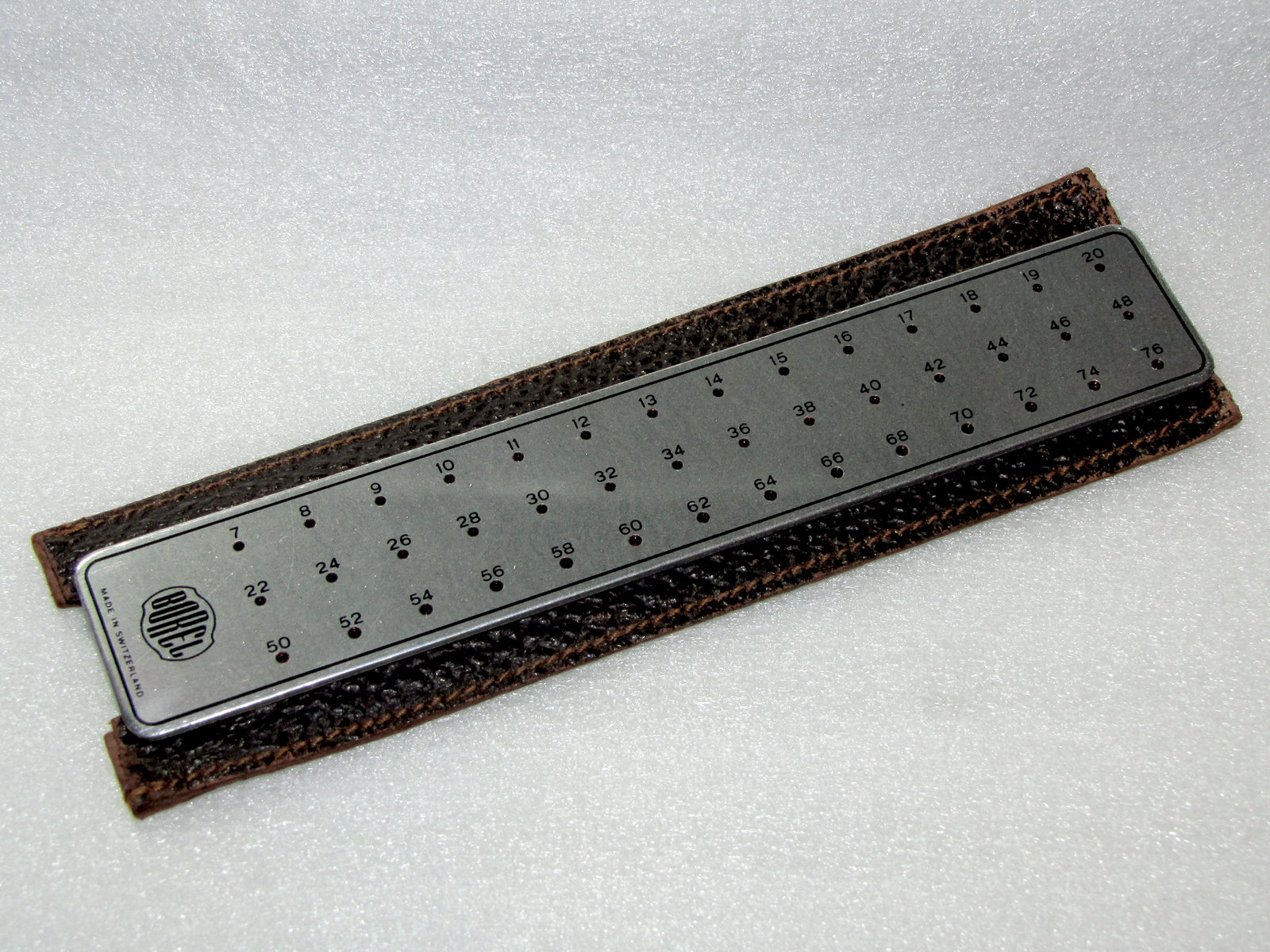 |
|
|
|
|
A Set of High Precision Jewelled Pivot Gauges for checking the pivot size and
roundness, sized from balance staff pivots to wheel train pivots.
Jewel holes are in the range from
0.07 to 0.50 mm (0.003" to 0.020"), the step size is 0.0025 mm
(~0.0001").
|
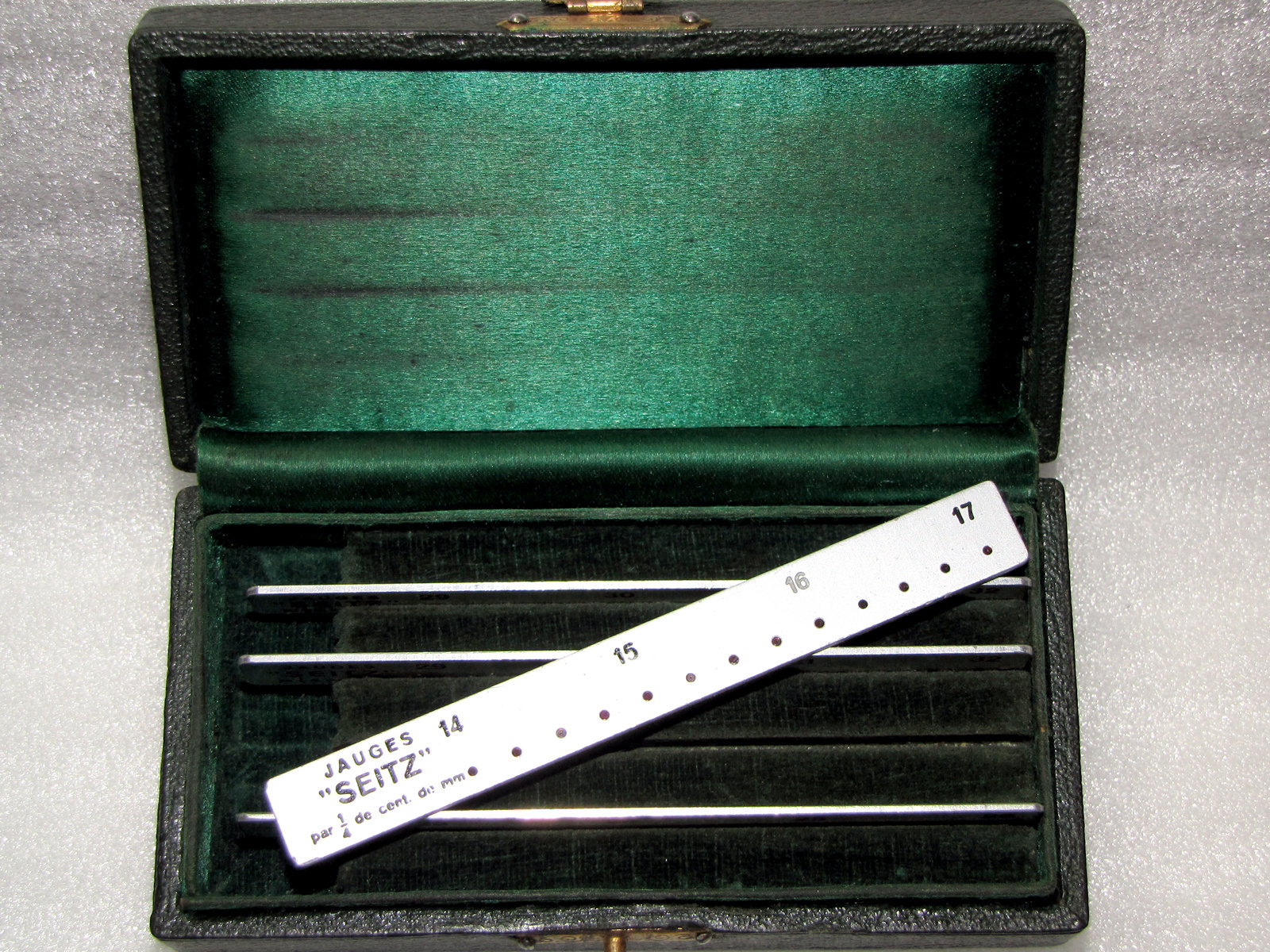 |
|
|
| Not to
forget roller jewels.
To replace one, one needs either a very steady
and sure hand with a pair of tweezers or a roller jewel holding tool.
Much like the vintage K&D roller jewel holding tool shown on
the right which provides one with a safer means of holding roller
jewel for placing it in the roller. |
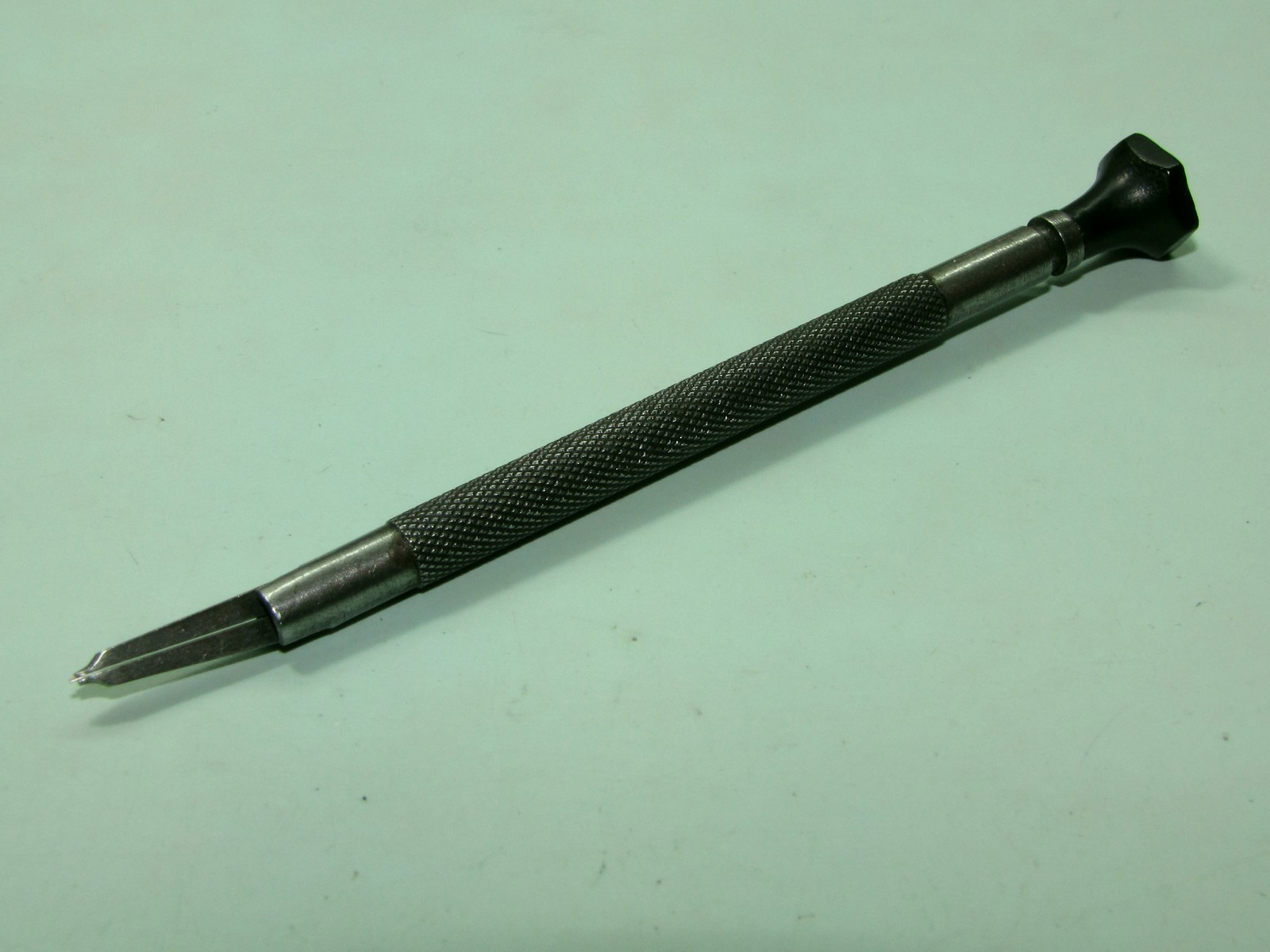 |
|
|
| Or
perhaps a newer design holder, currently supplied by Bergeon, comes in
two sizes to fit two size ranges of roller jewels. |
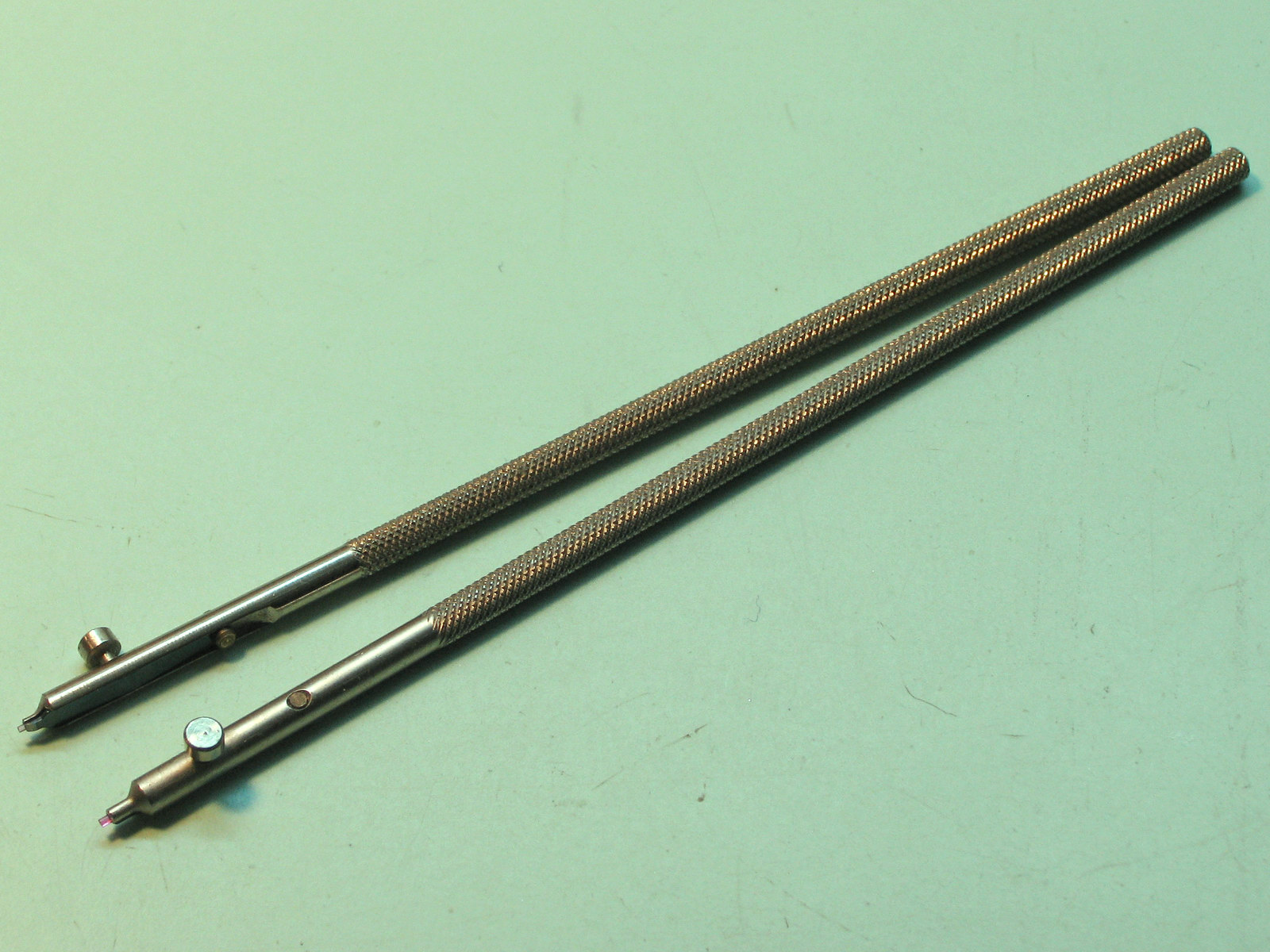 |
|
|
|
|
| |
|
| |
|
| |
|
|
|
| |

|
|
Copyright
� 2004, 2011, 2014, 2015, 2016, 2021 by Dushan Grujich. All rights reserved.
|
| |
Copyright
Notice |
|
|
| |
|
|
|
| |
|
|
|
| |
|
|

Accurate Visits
|
| |
|
|
|